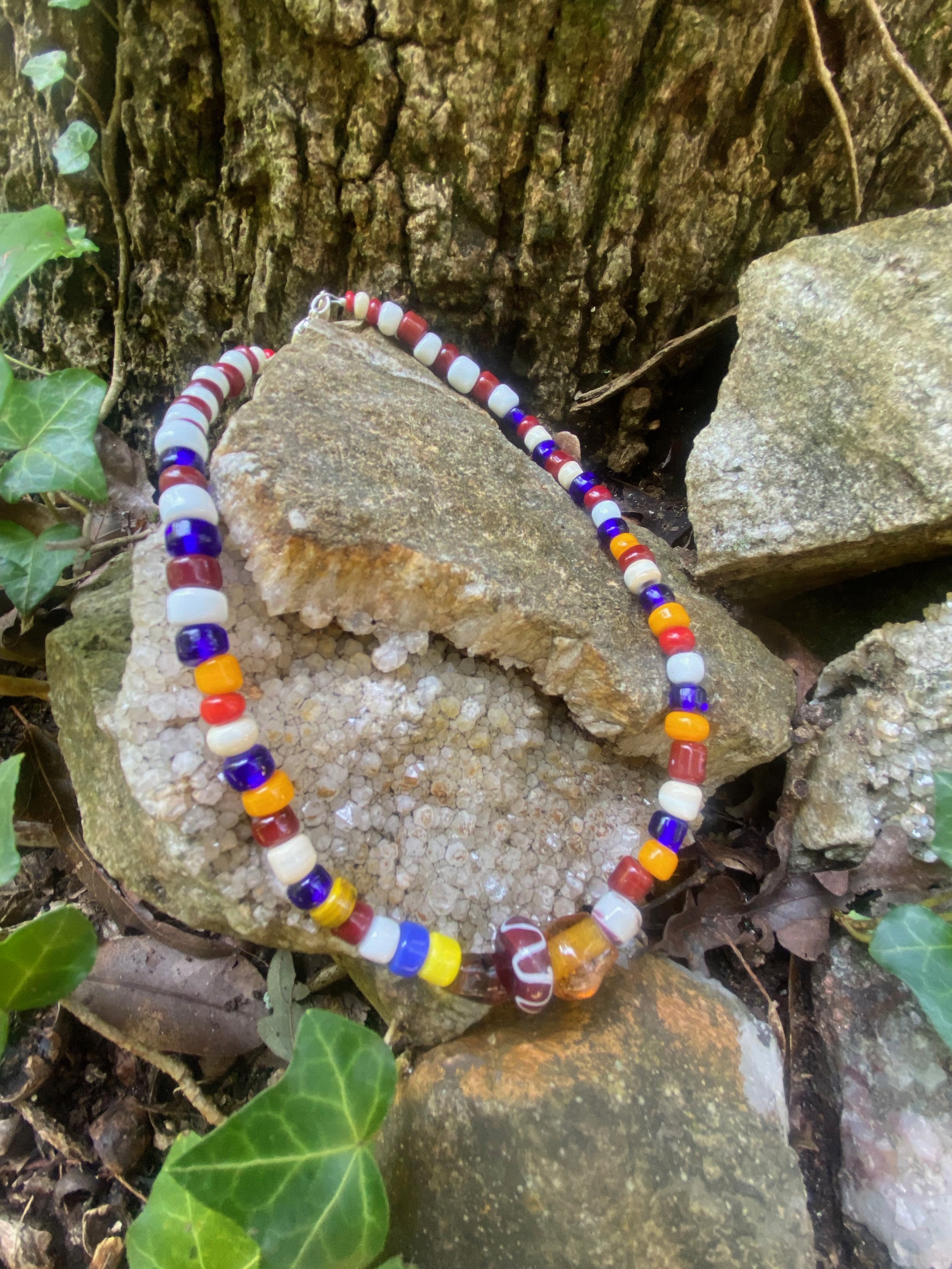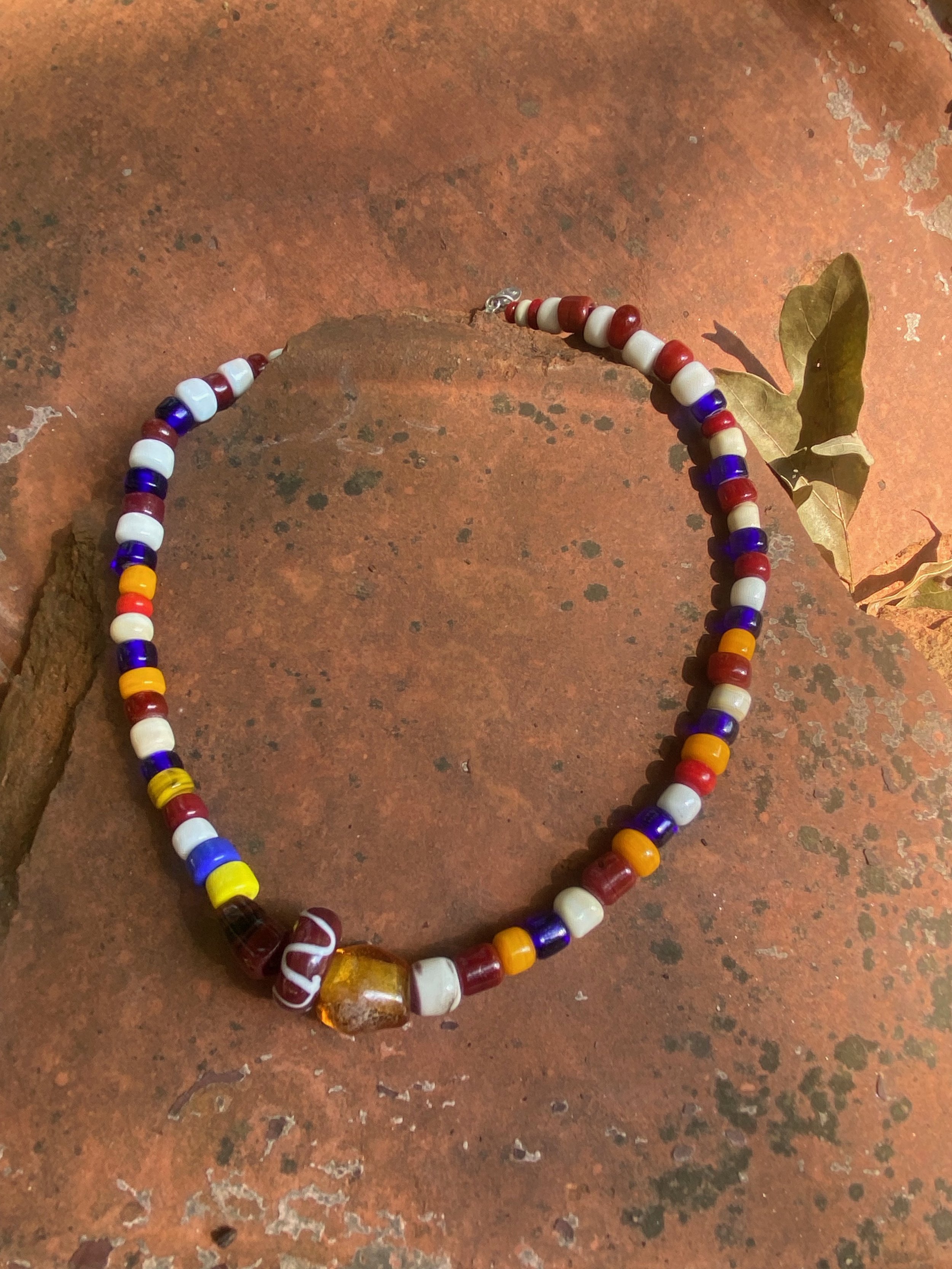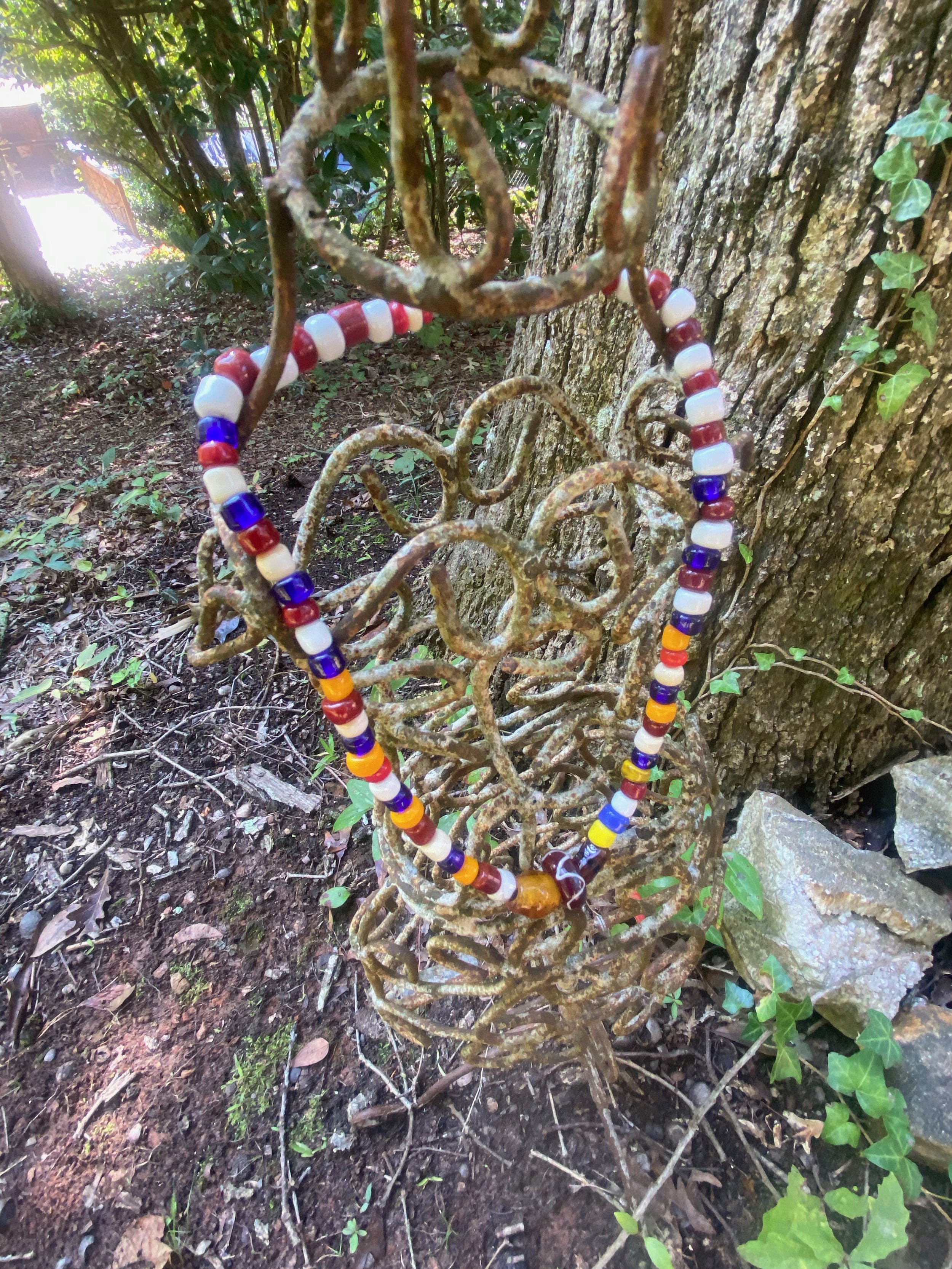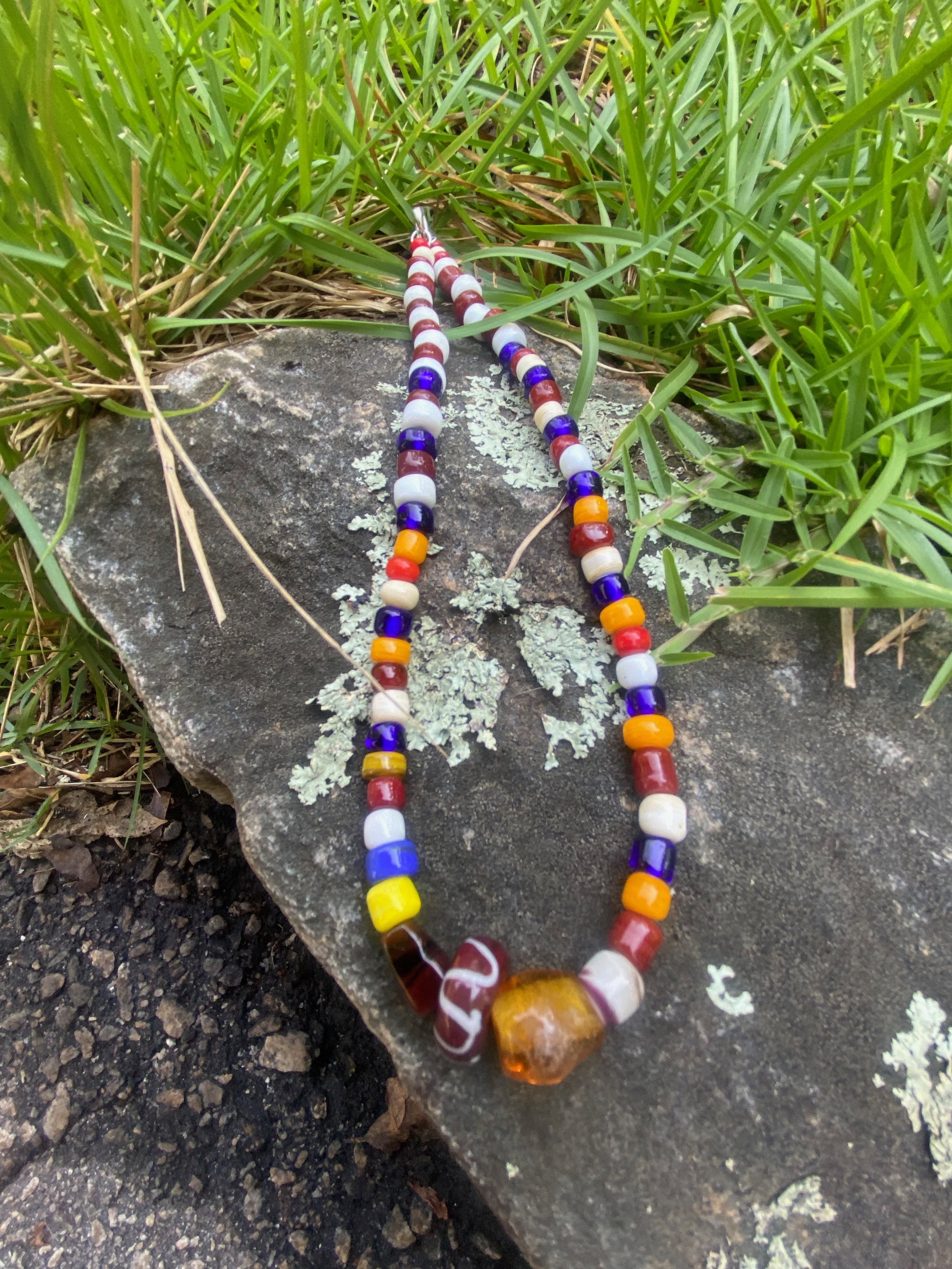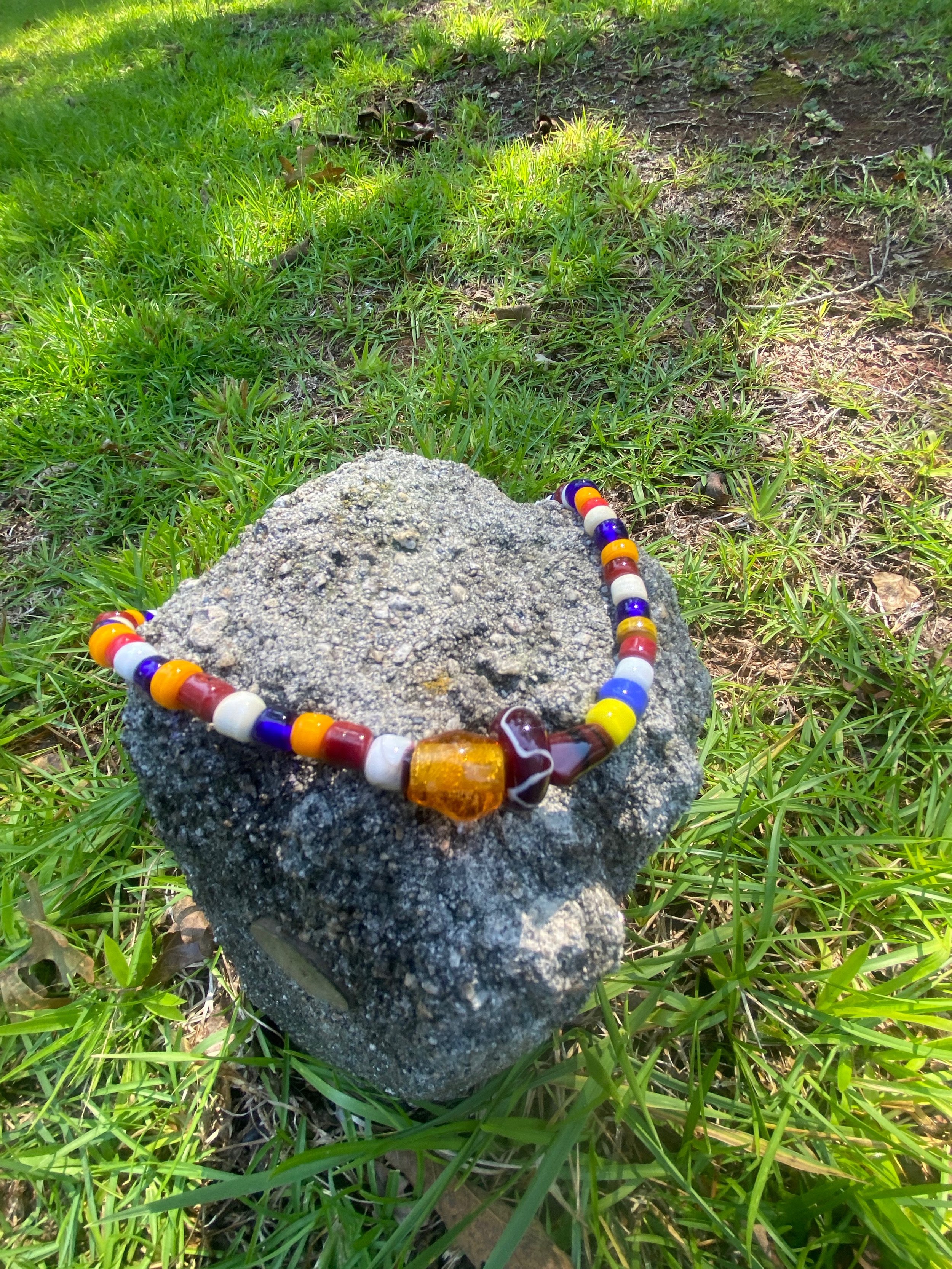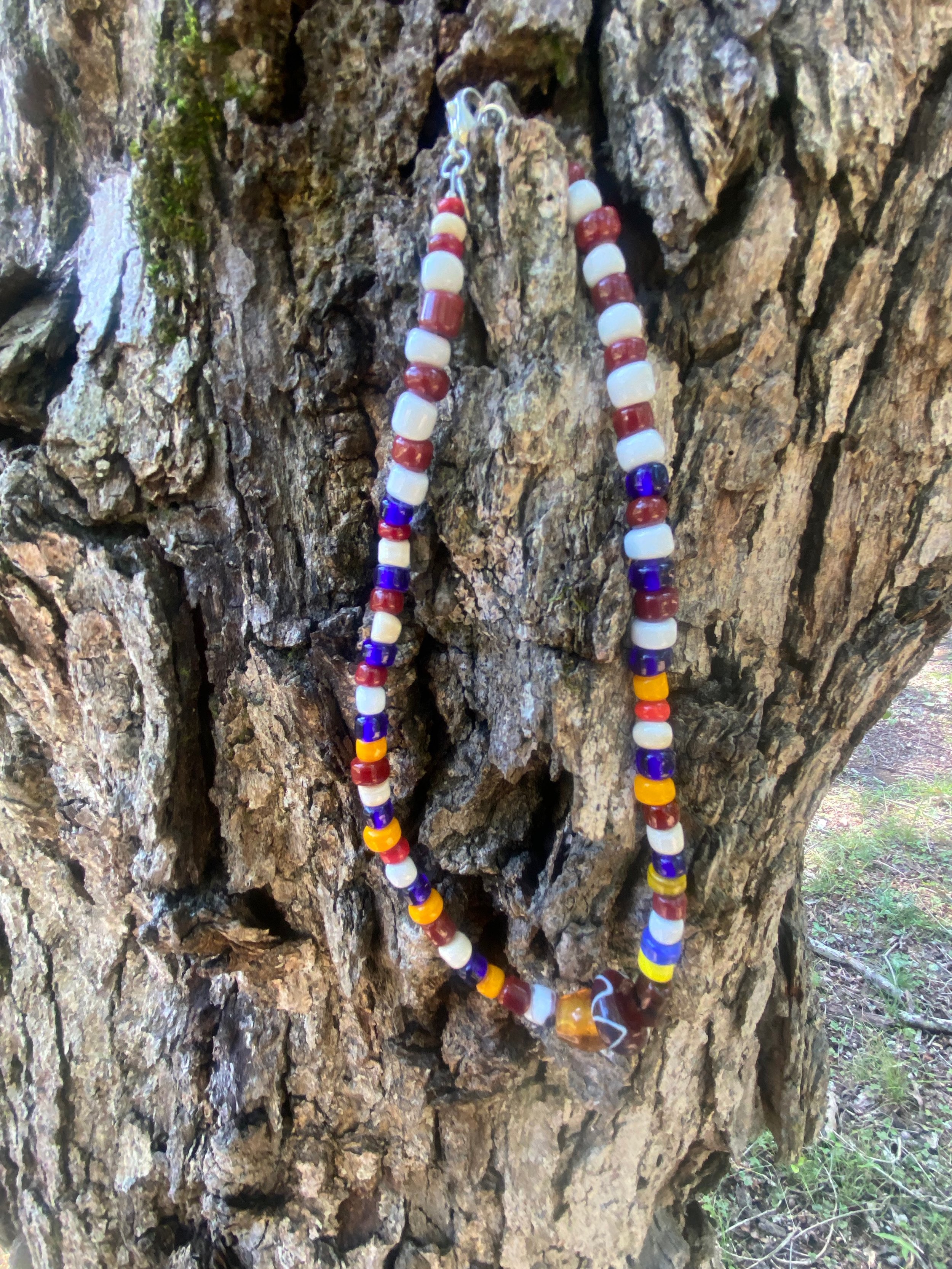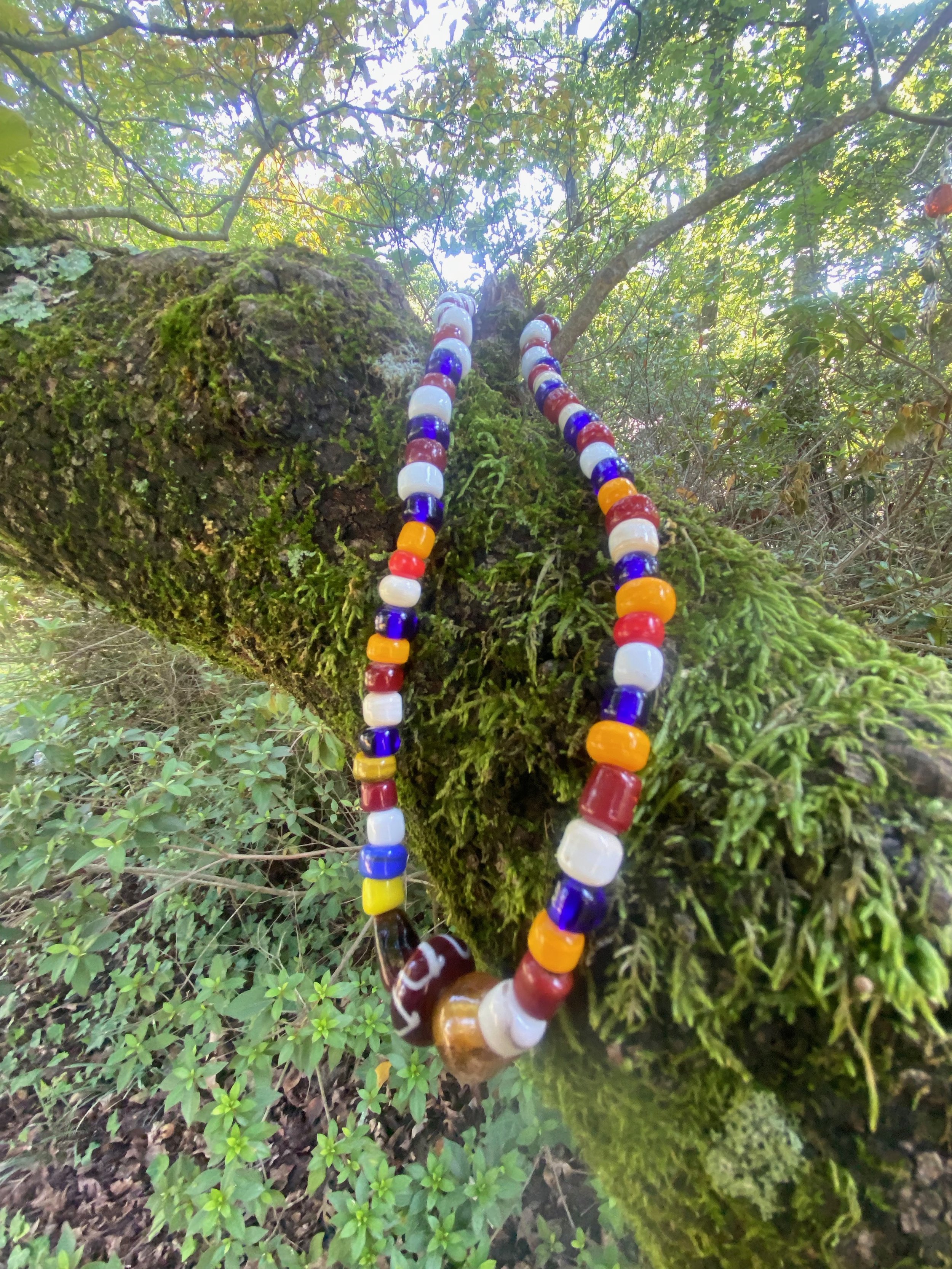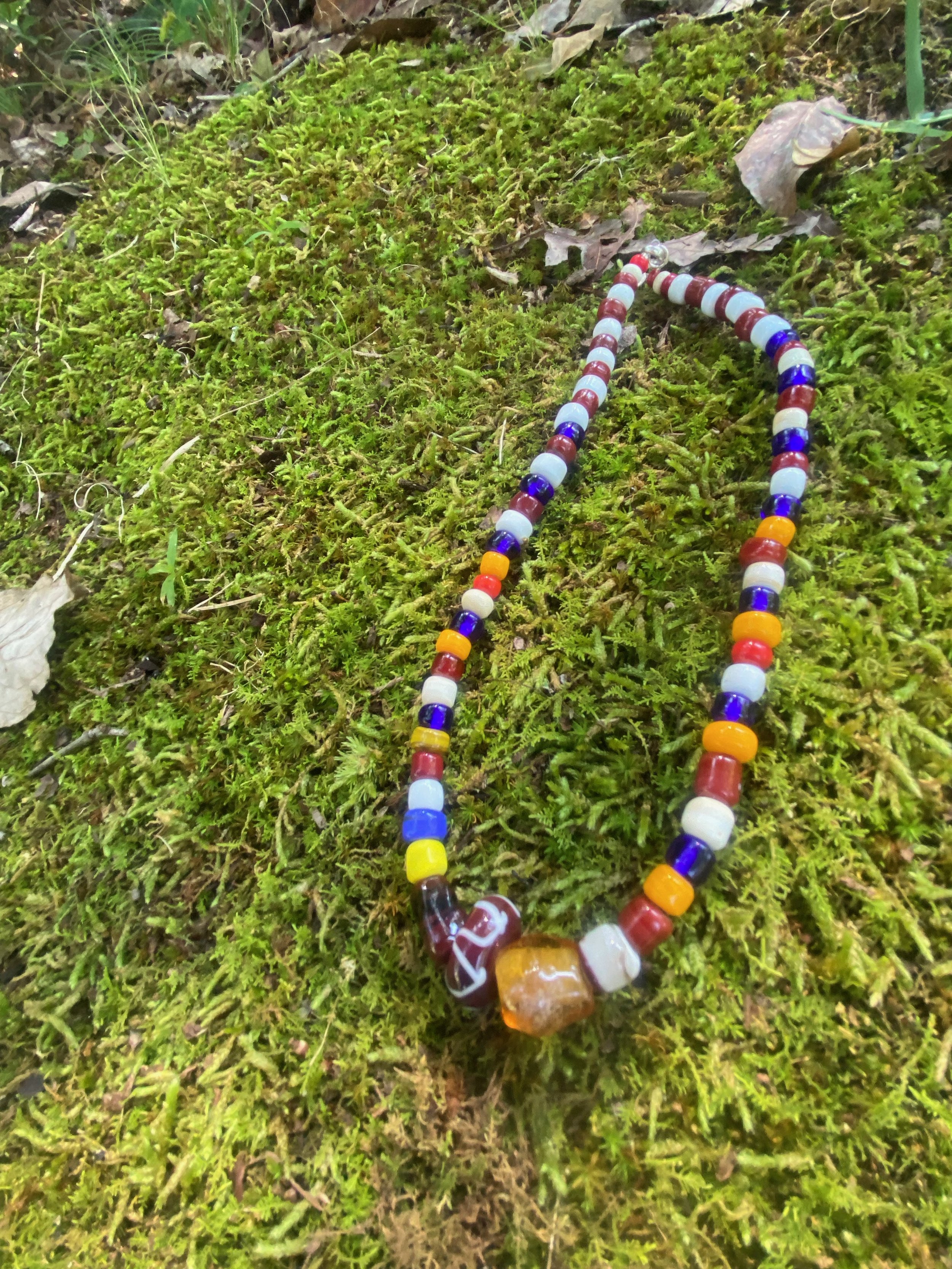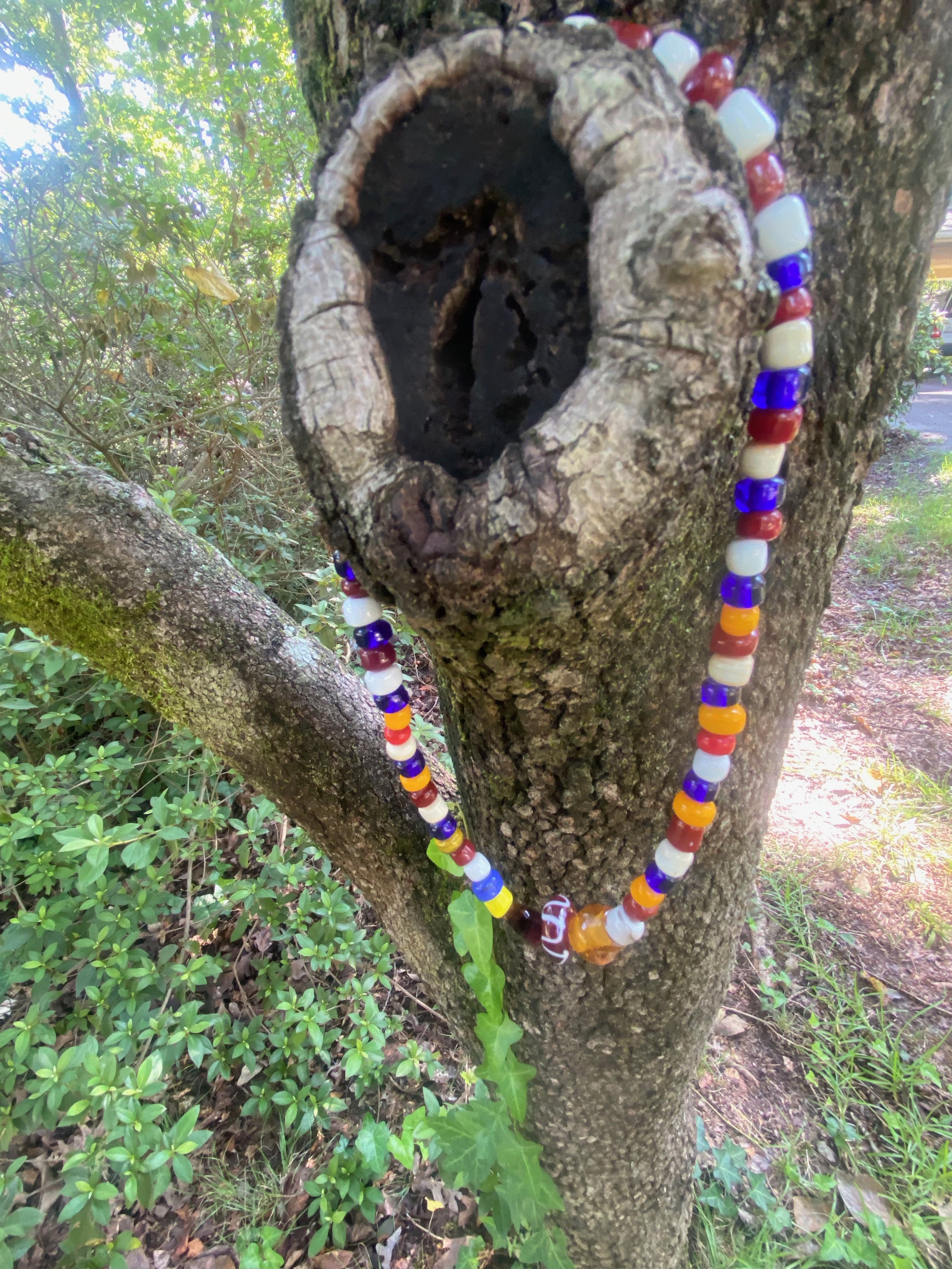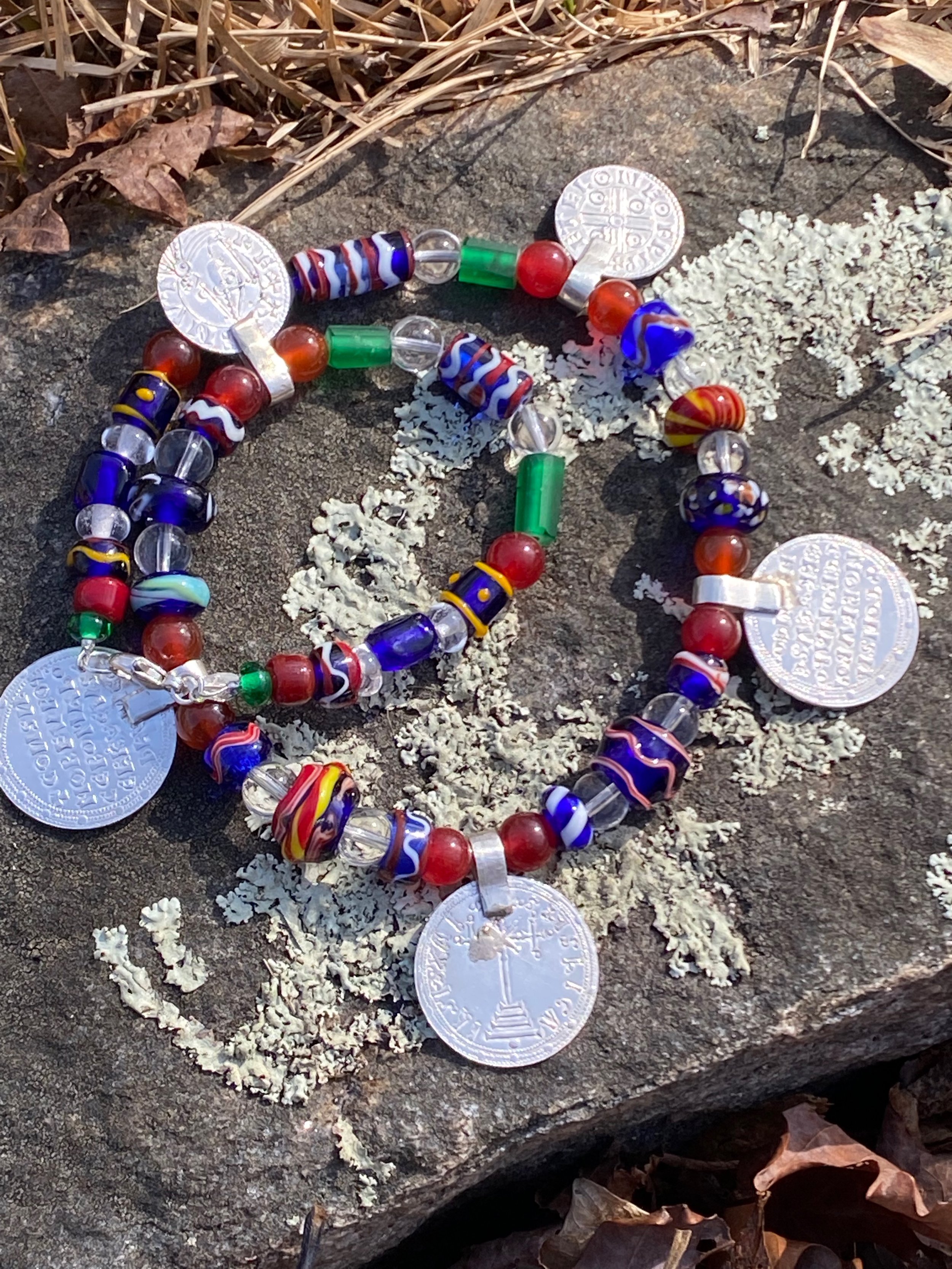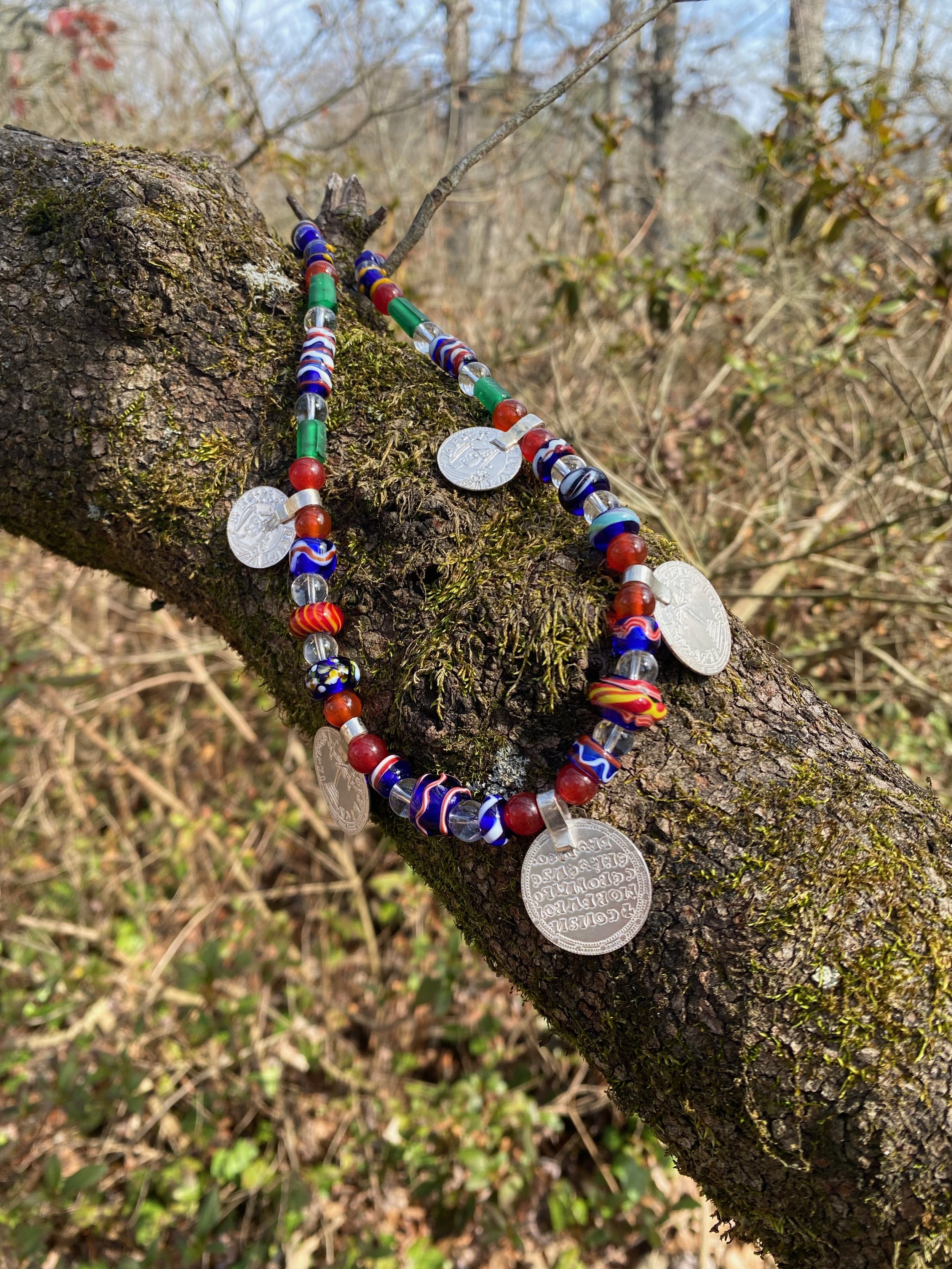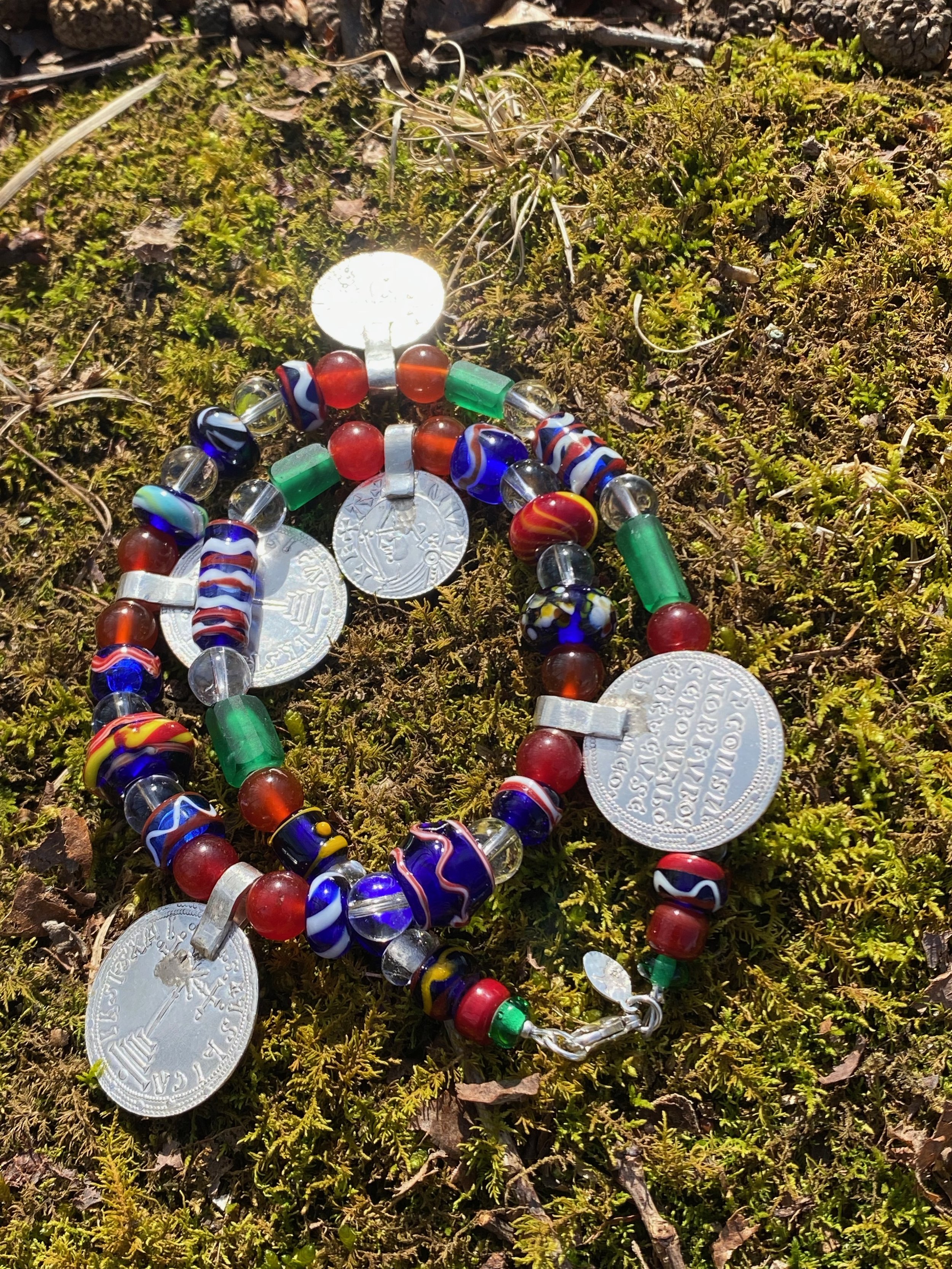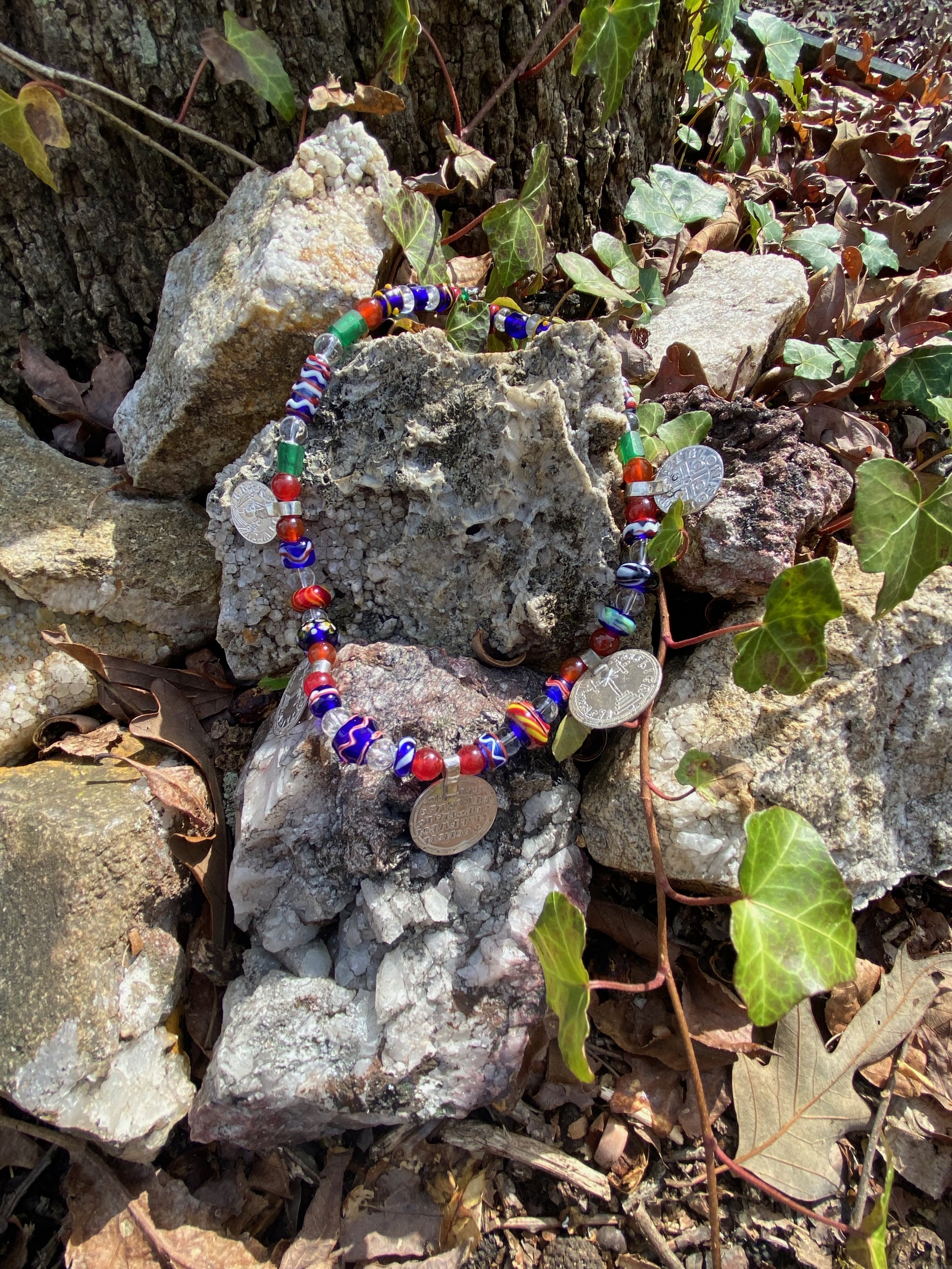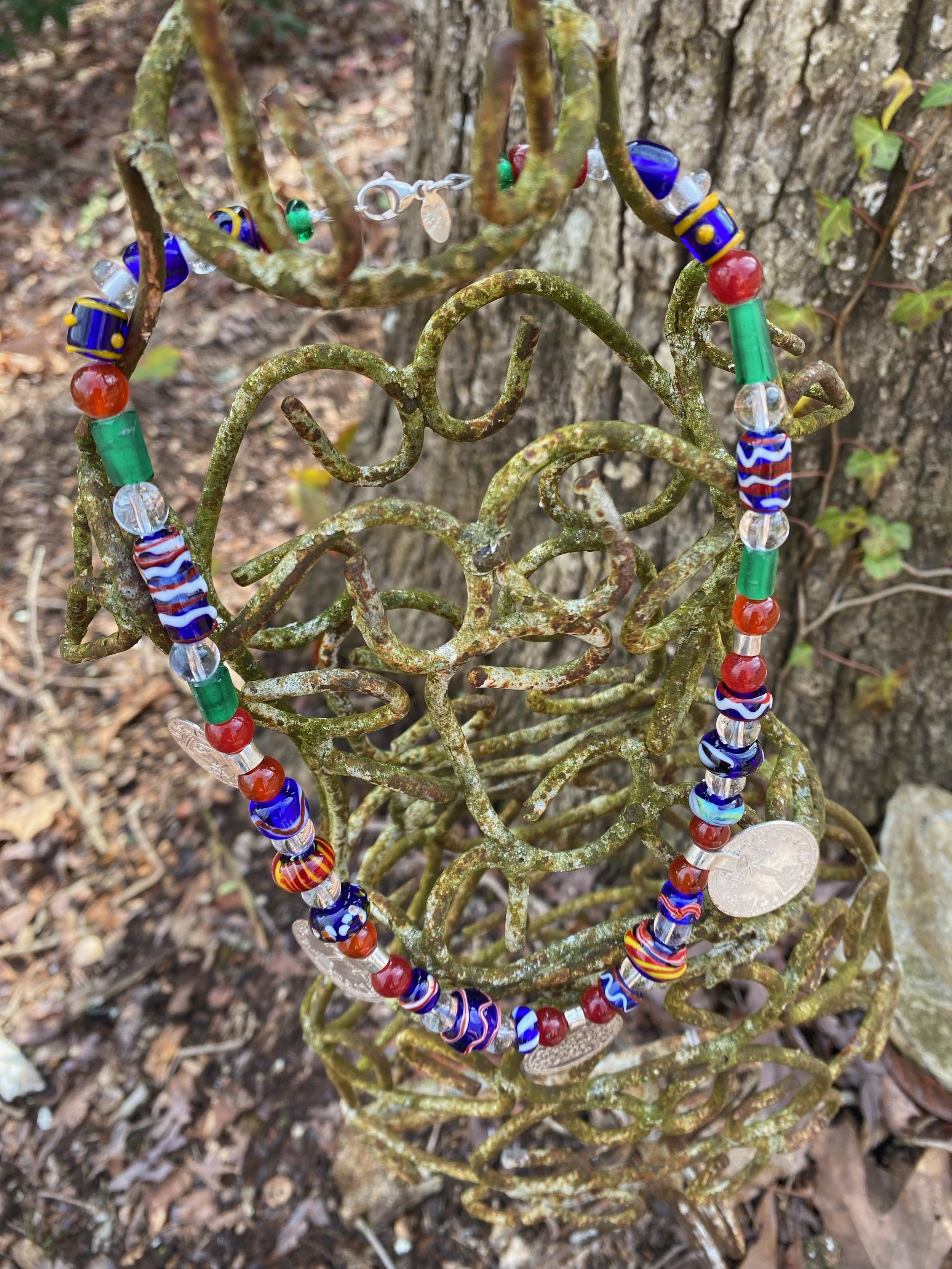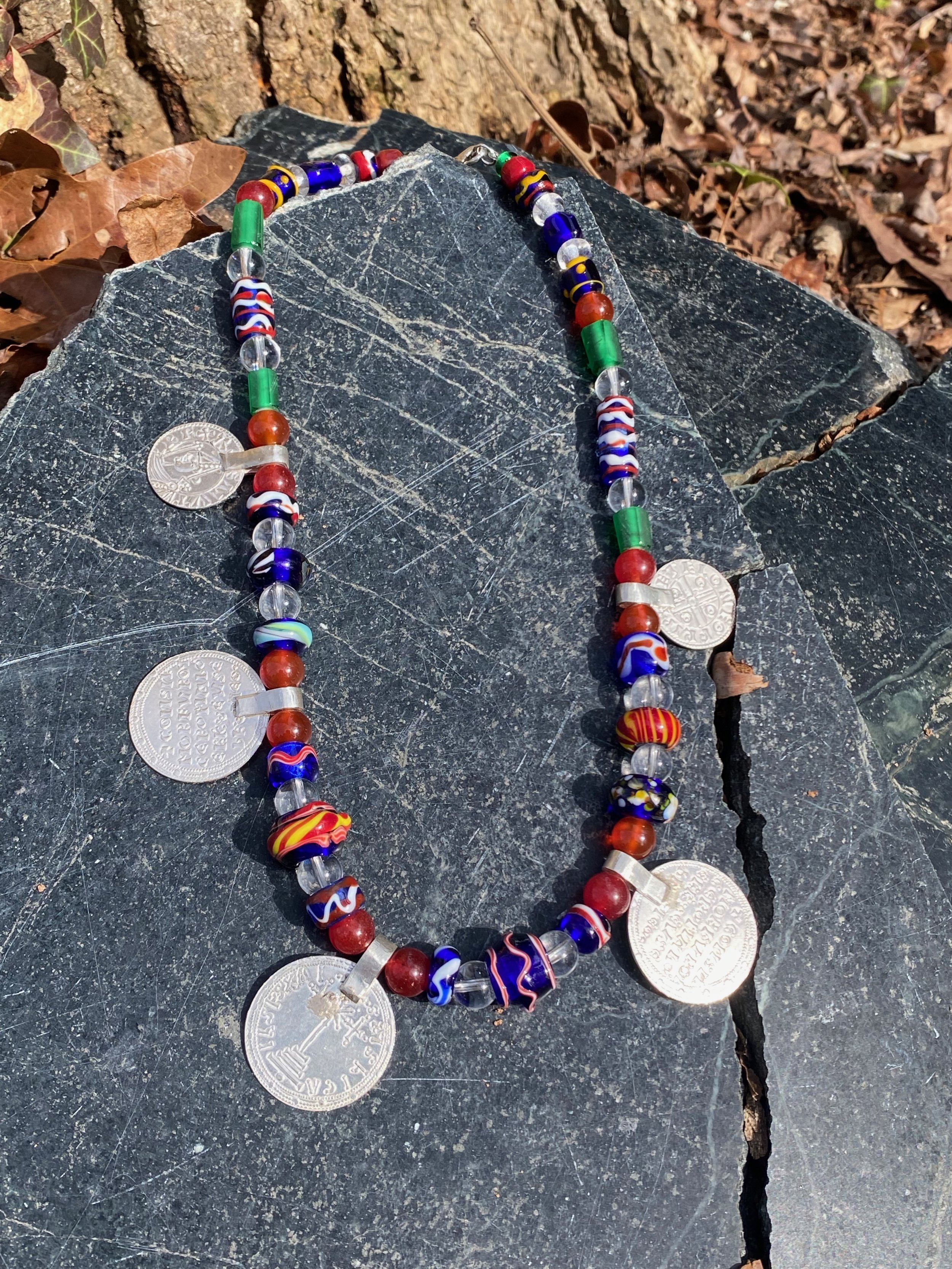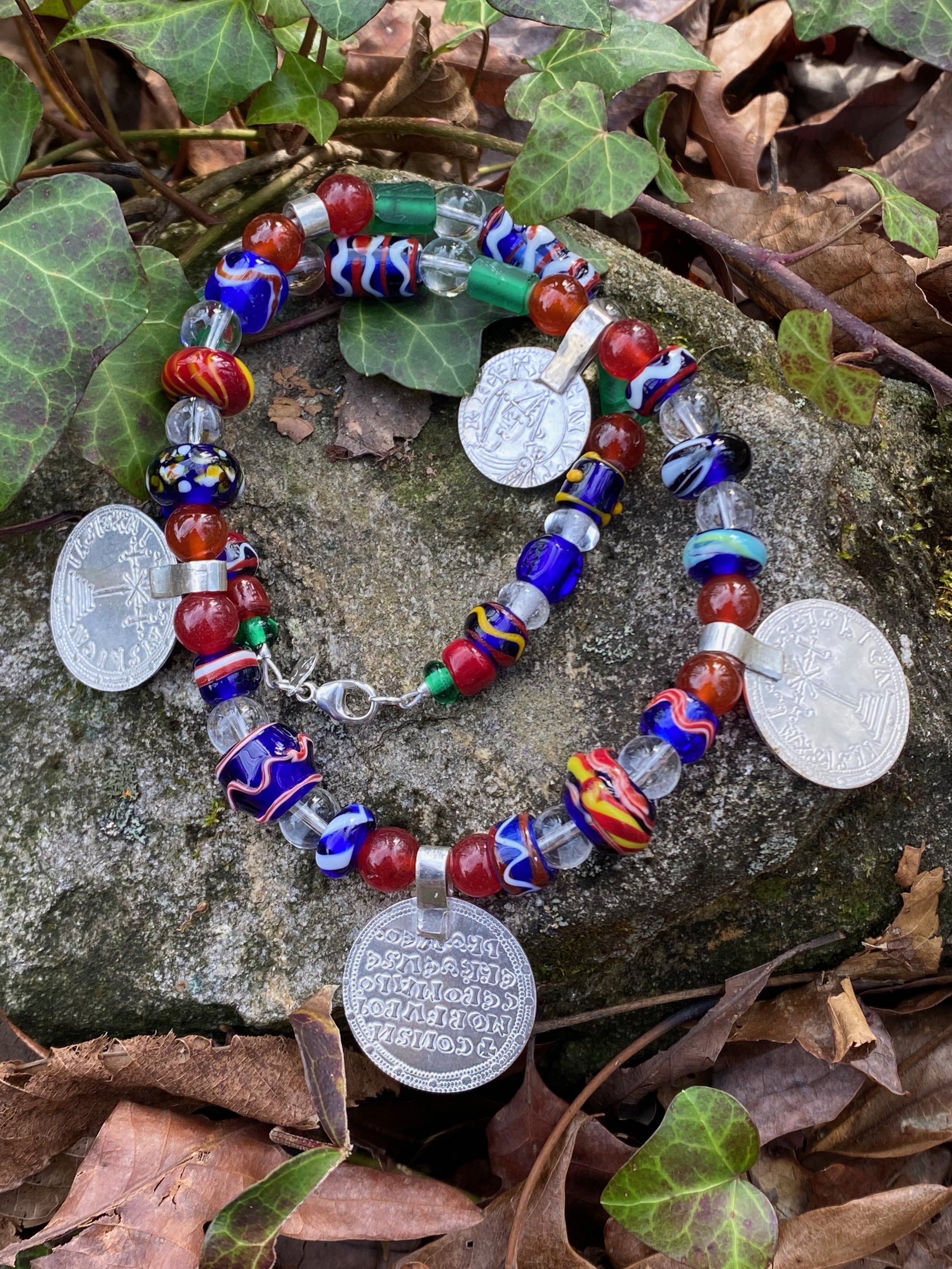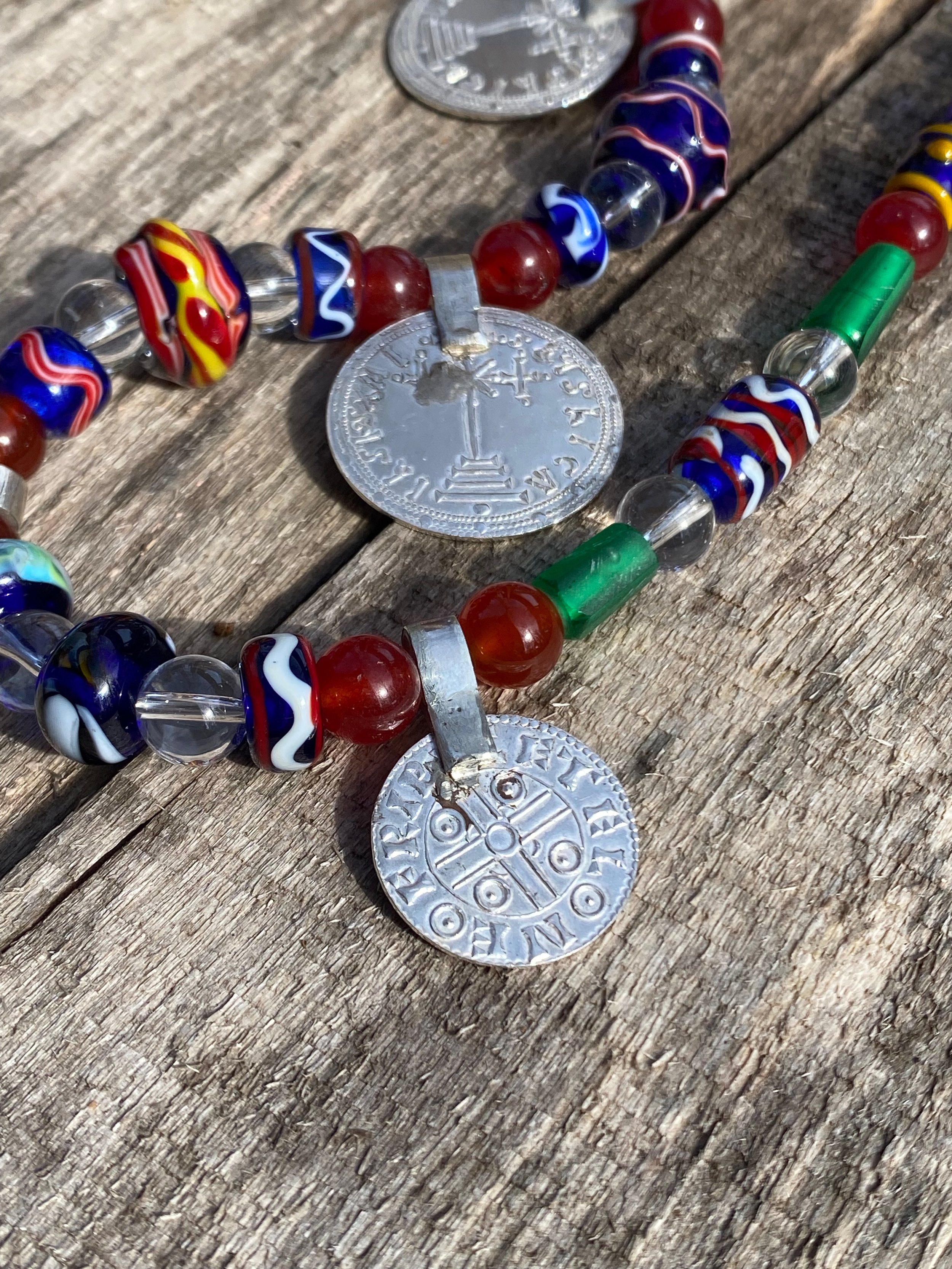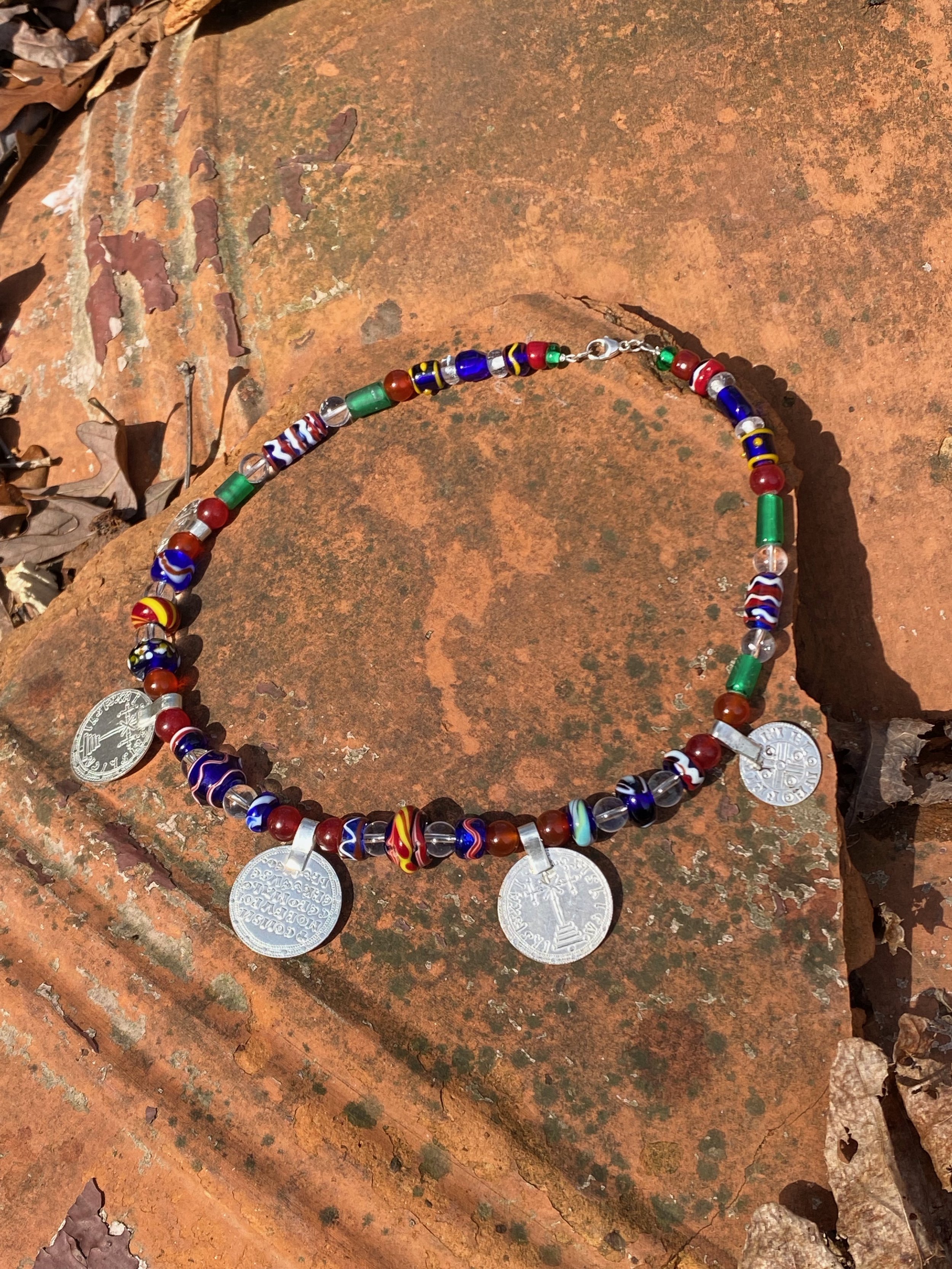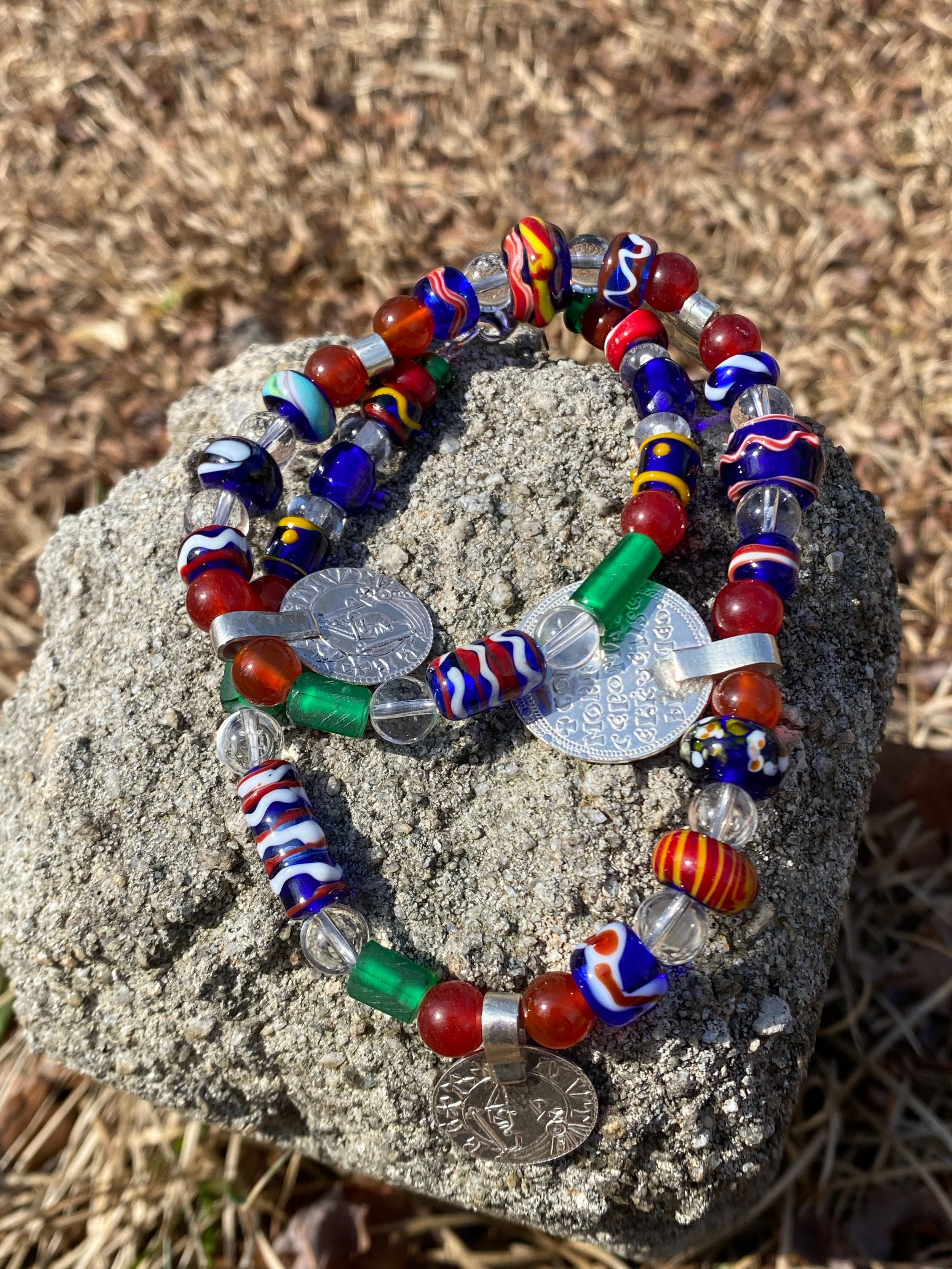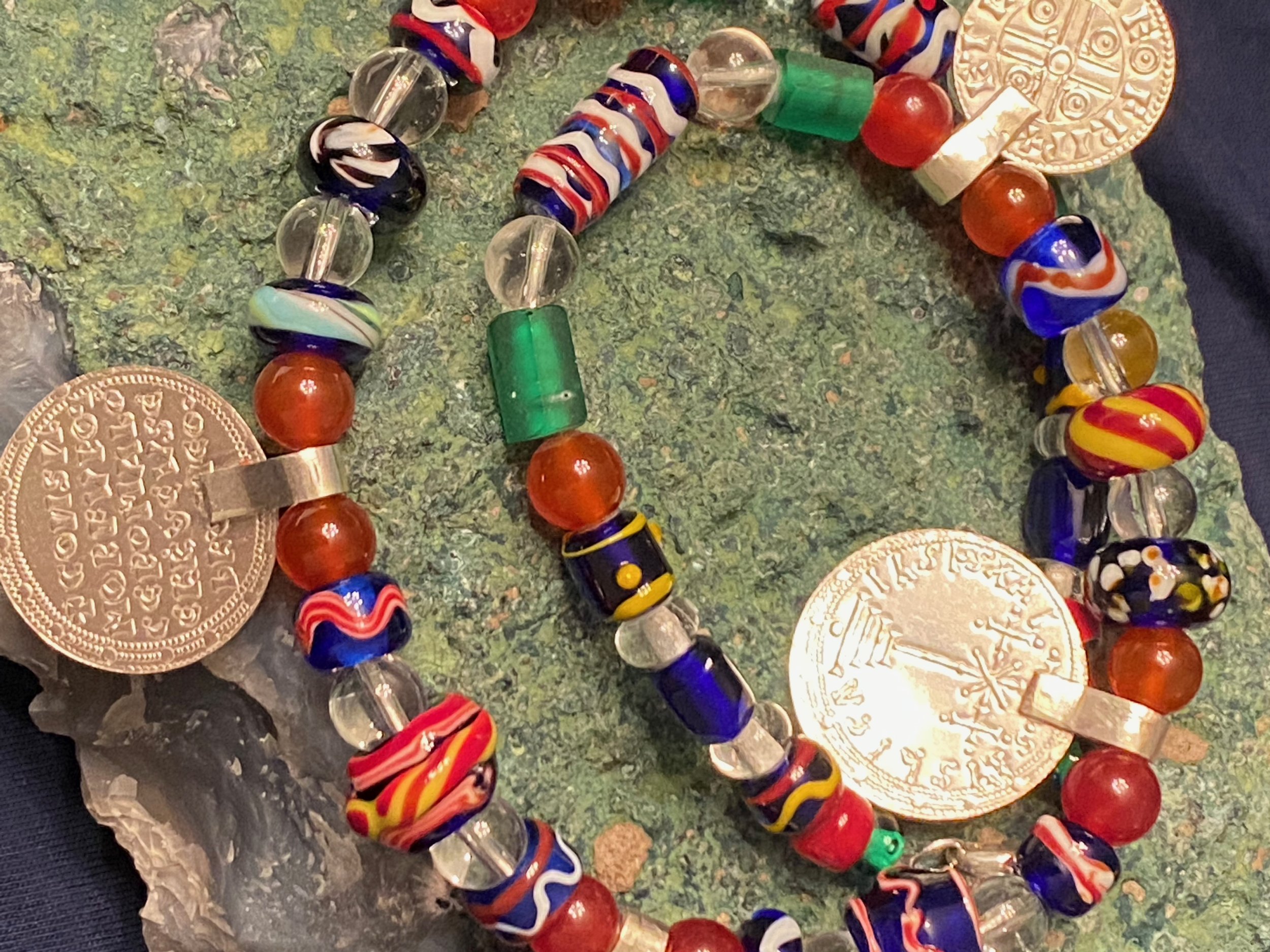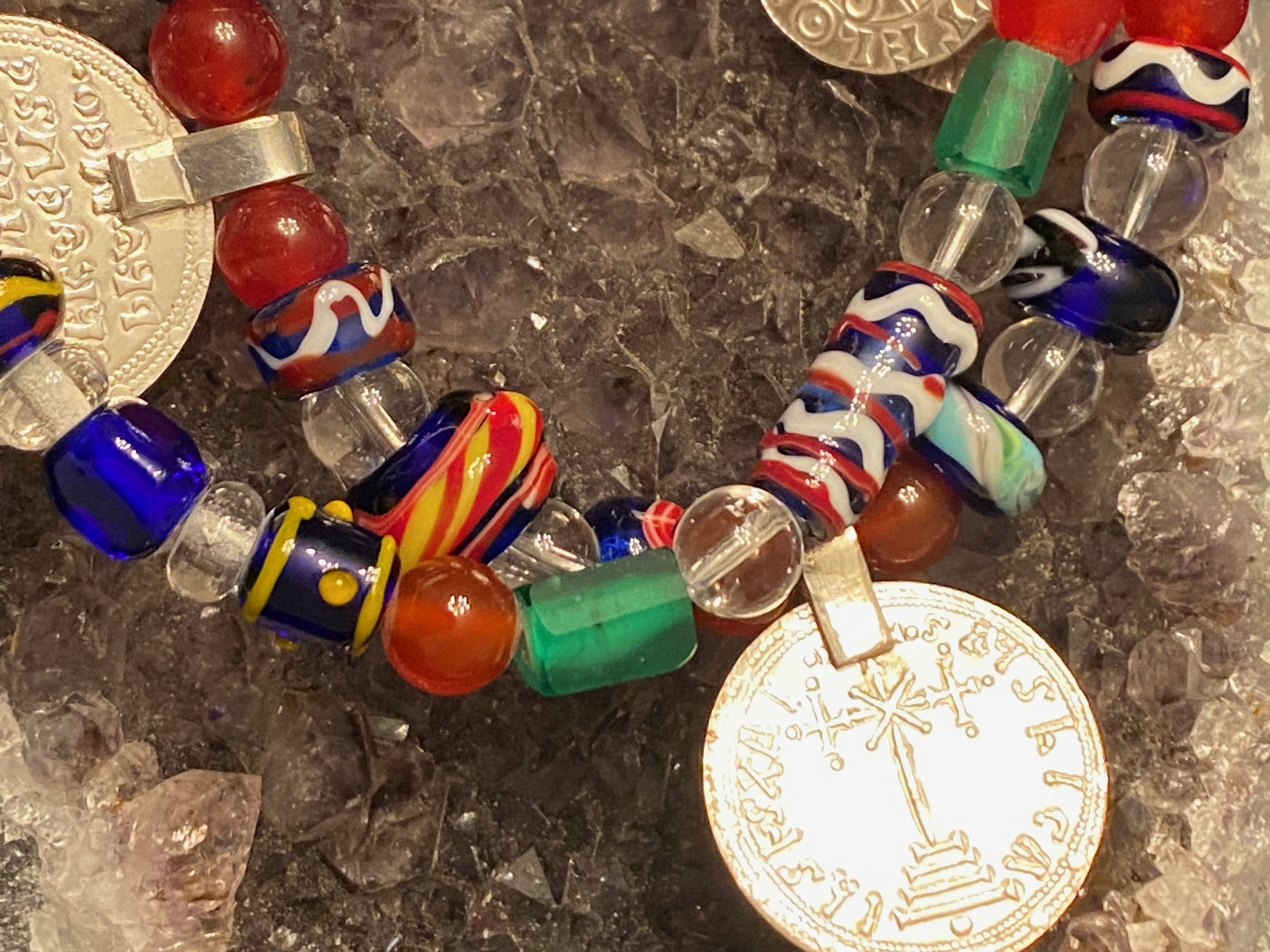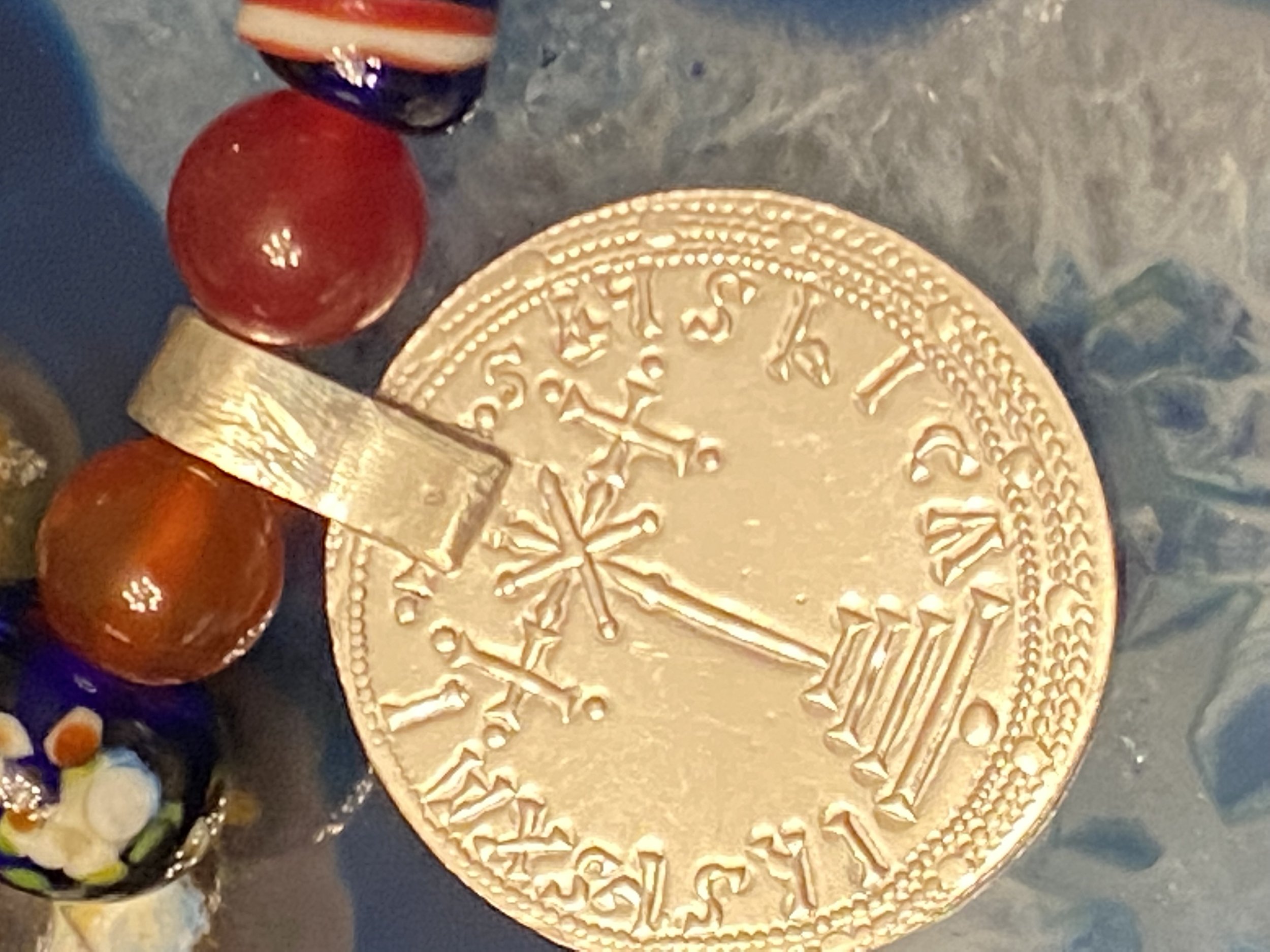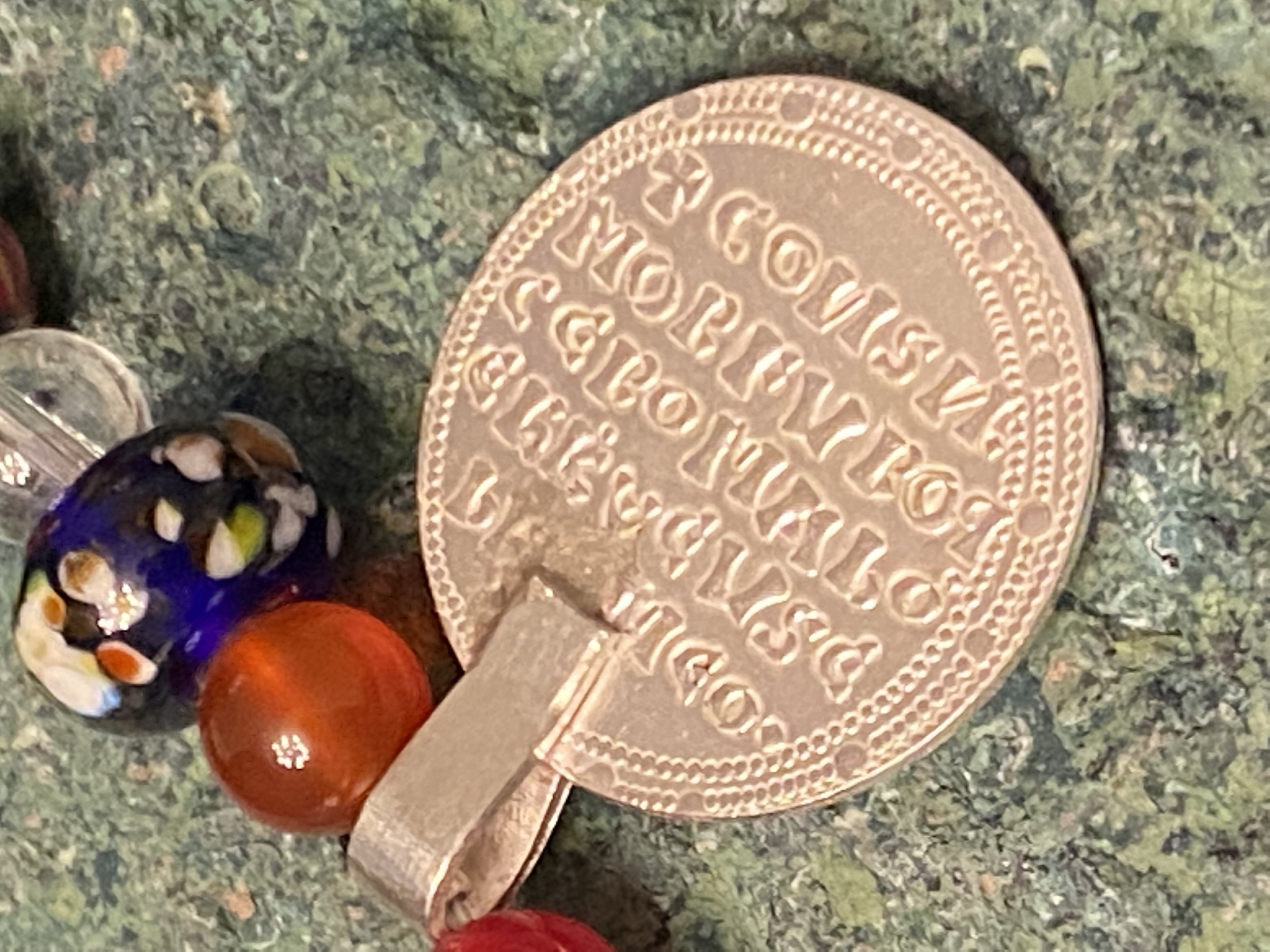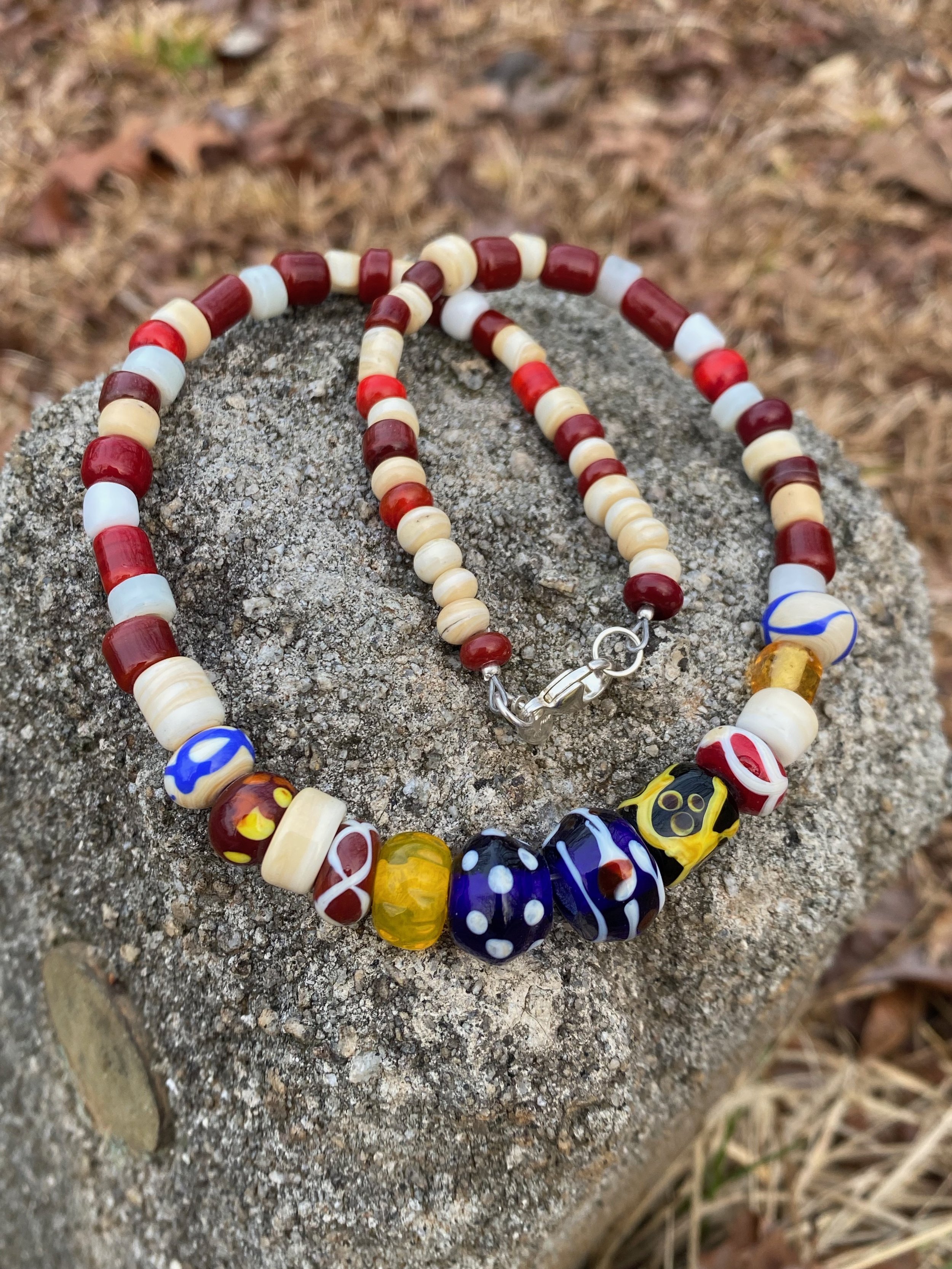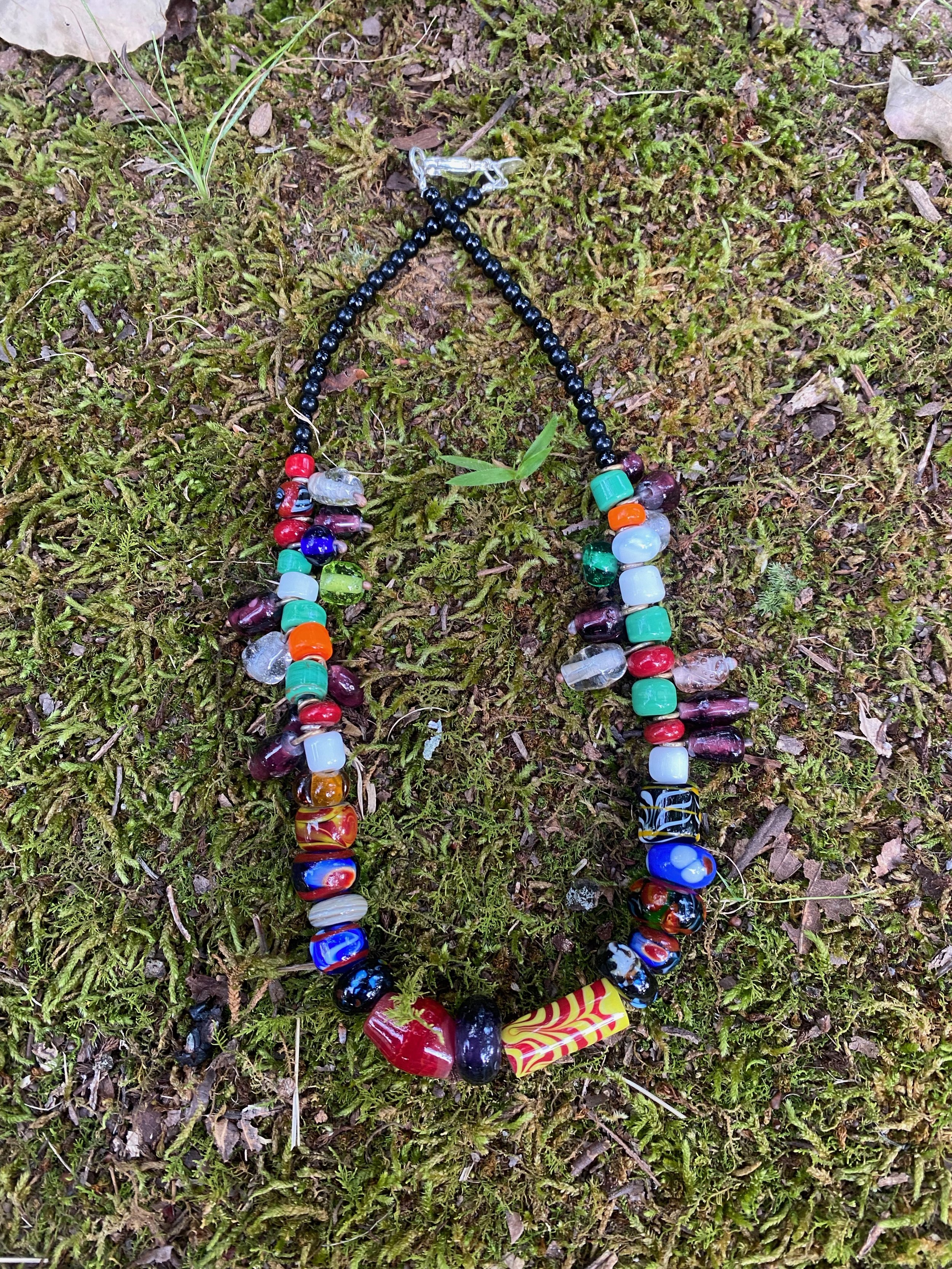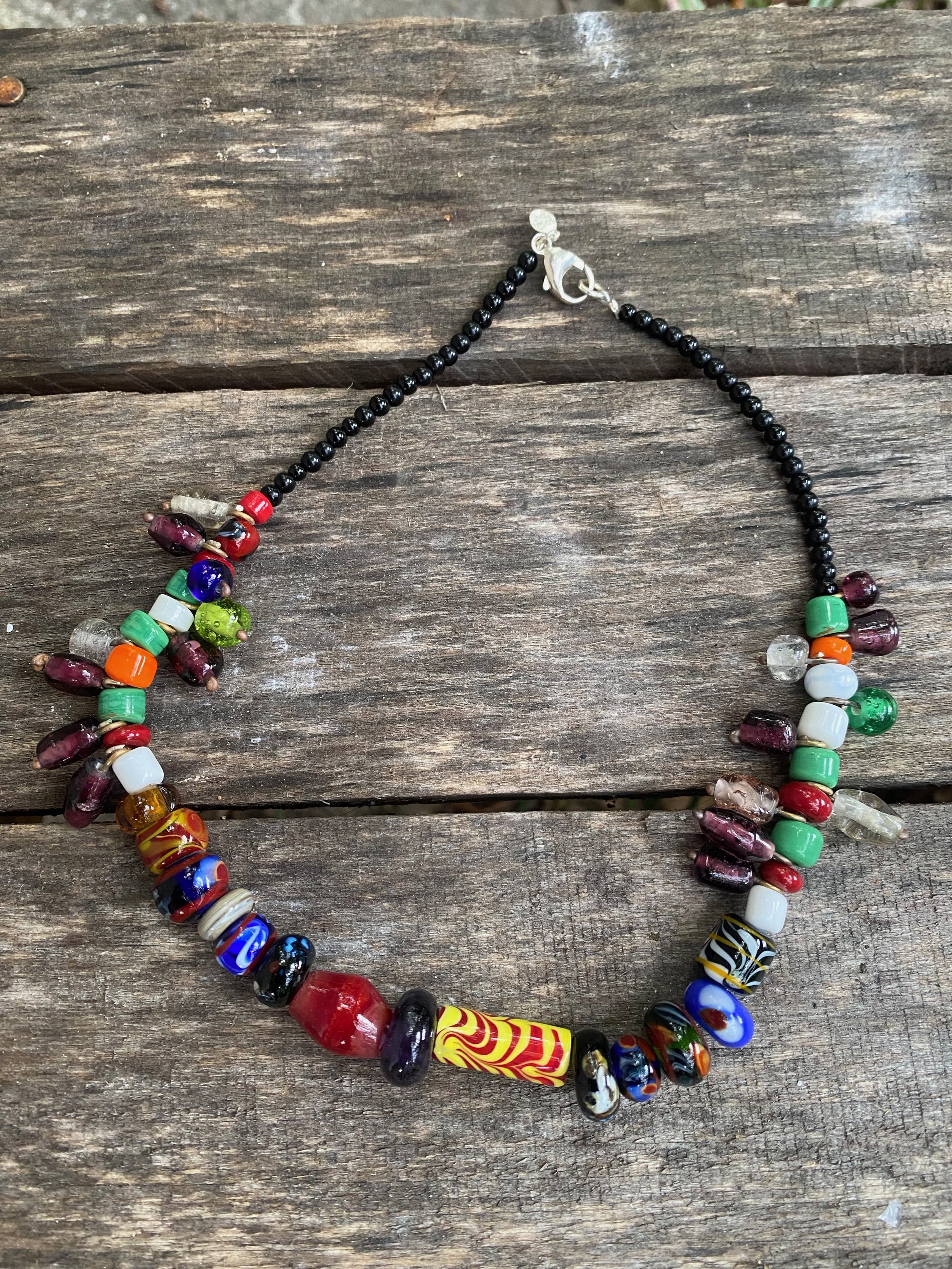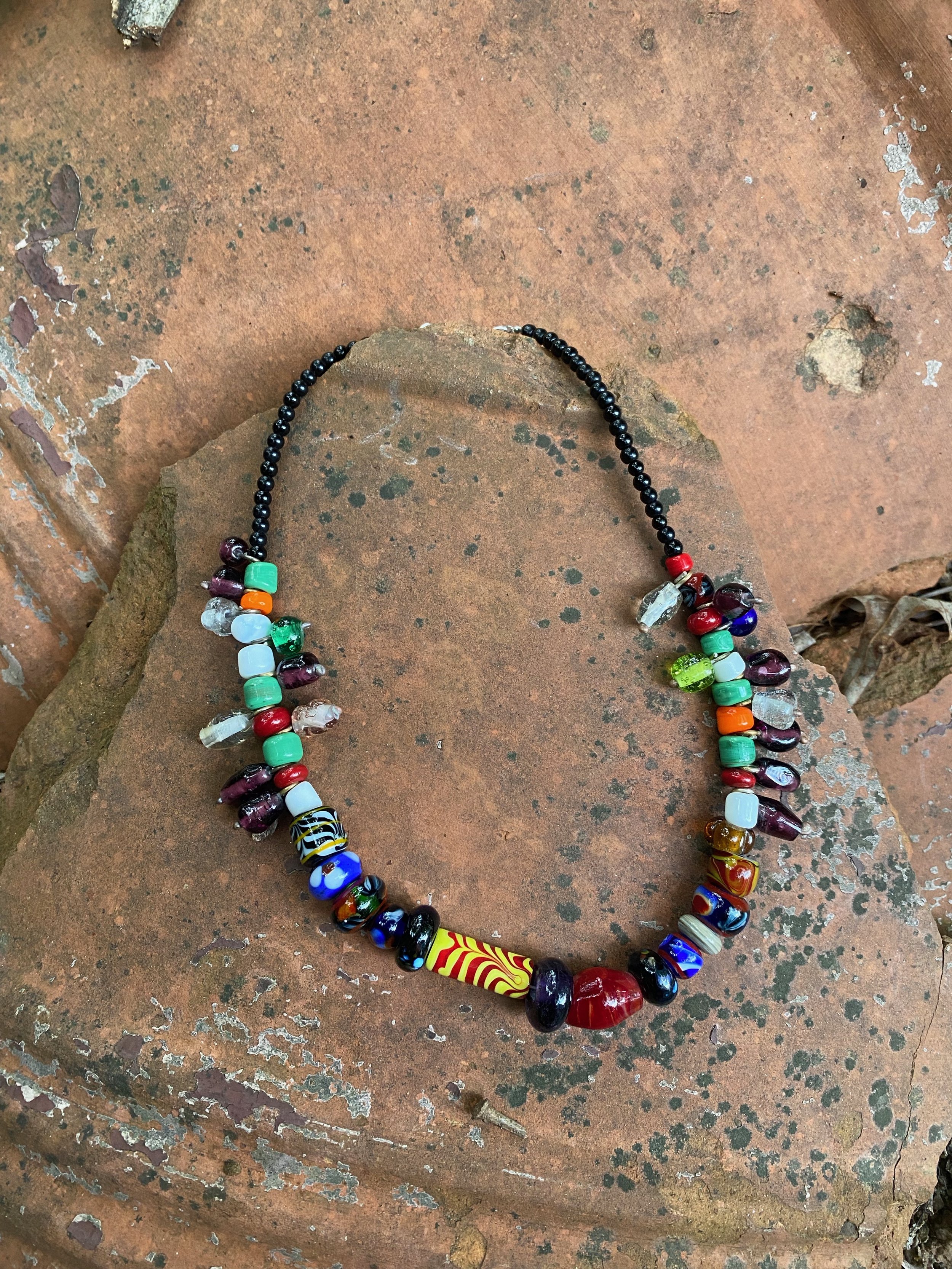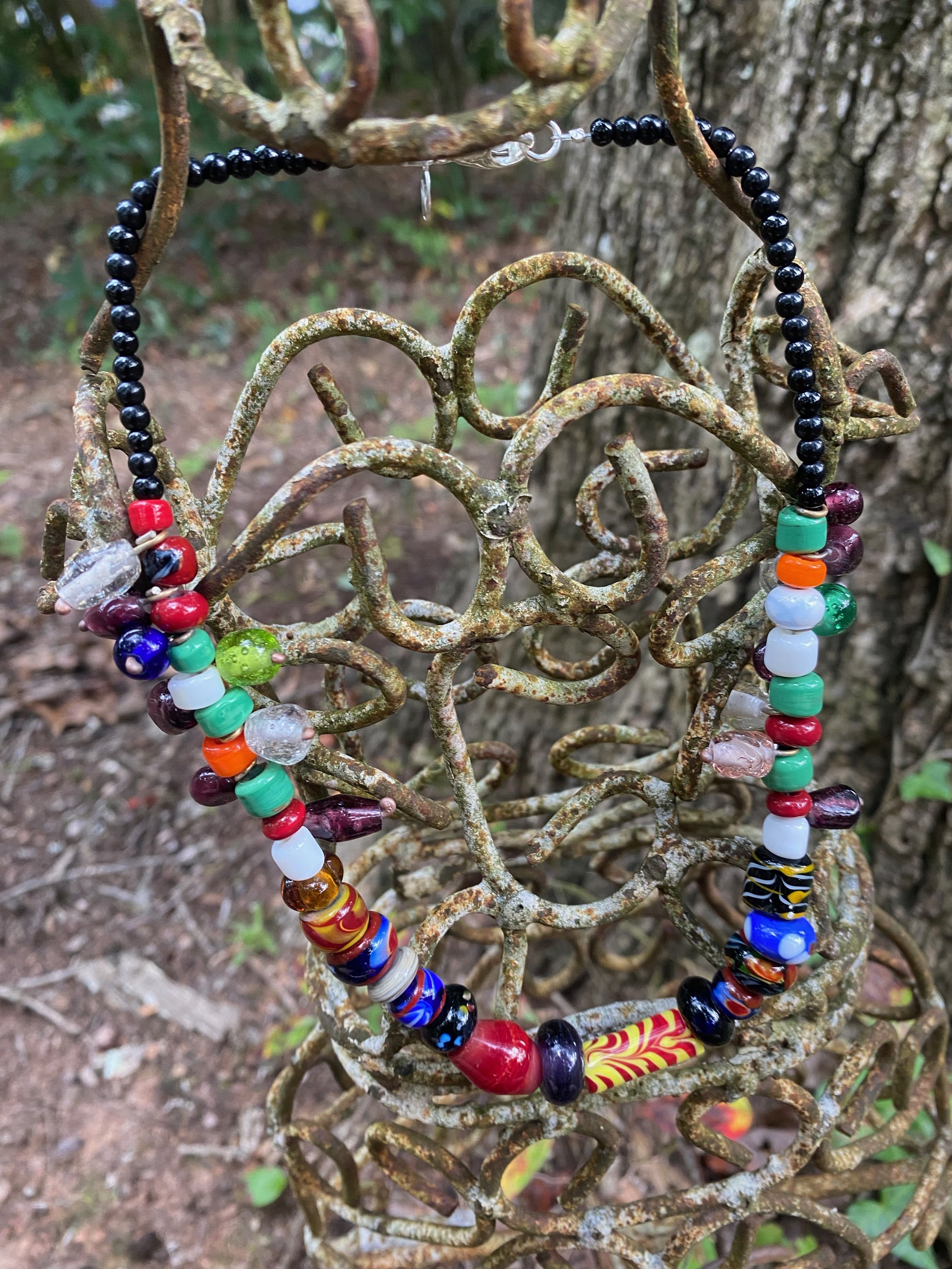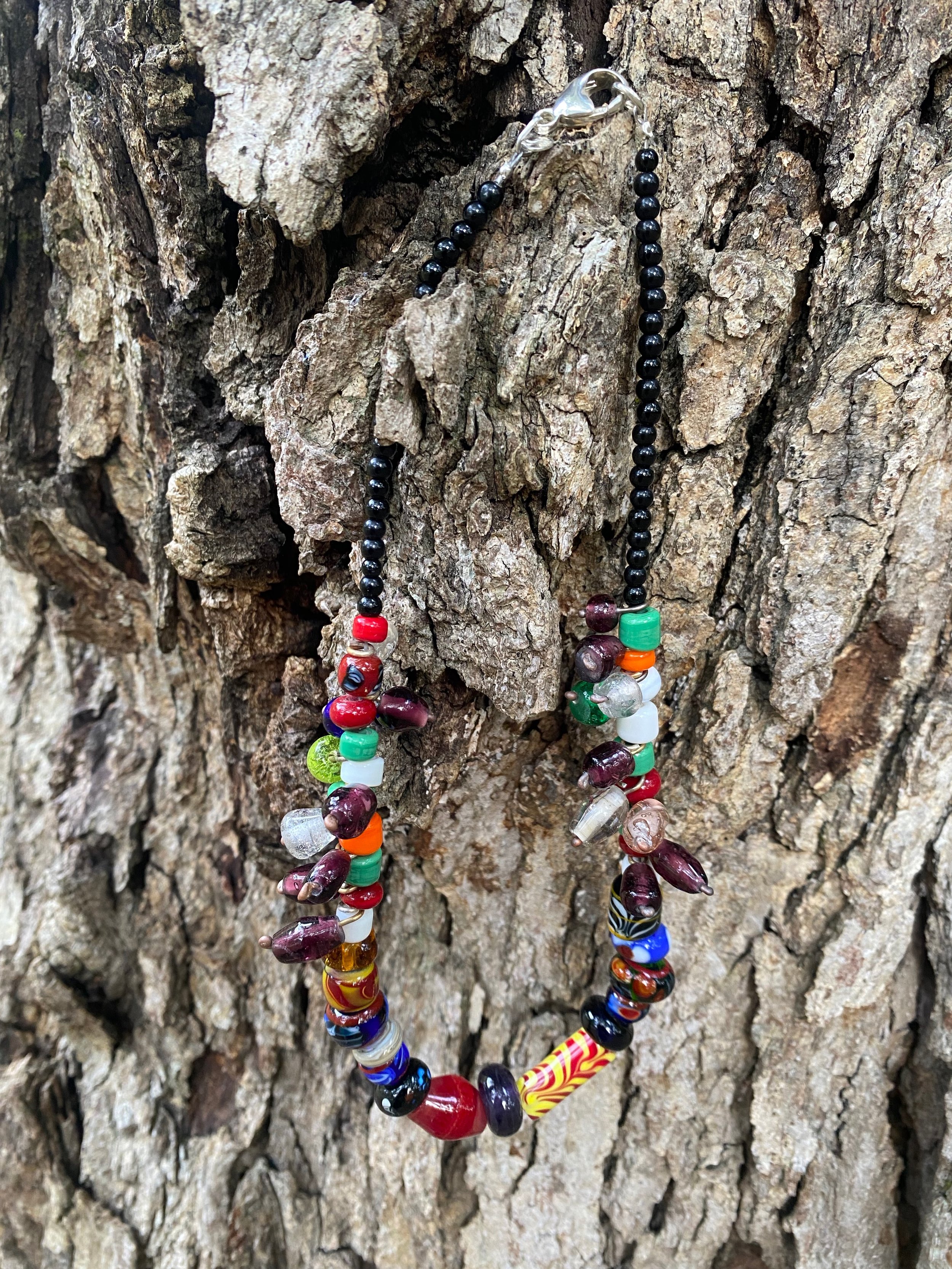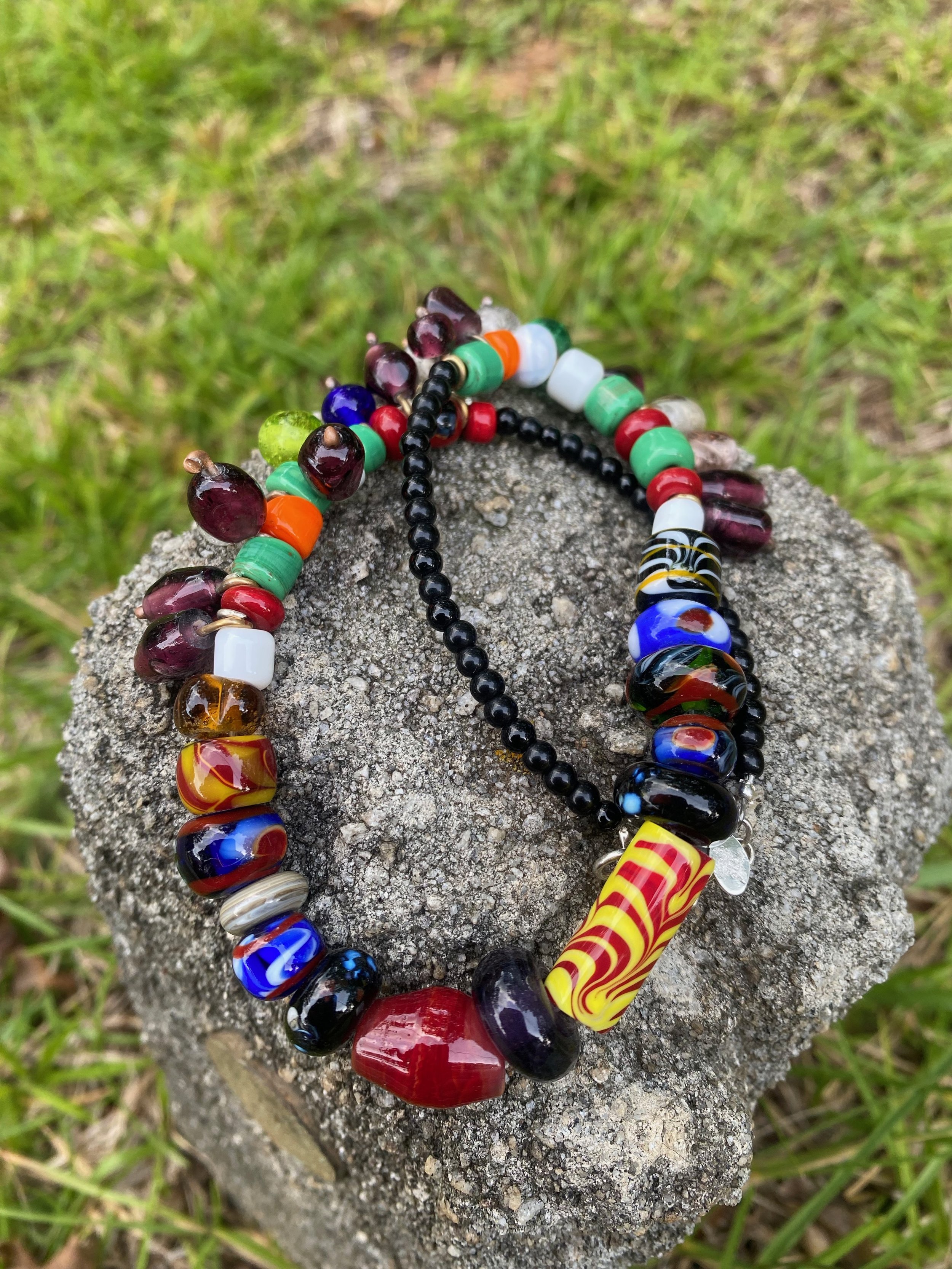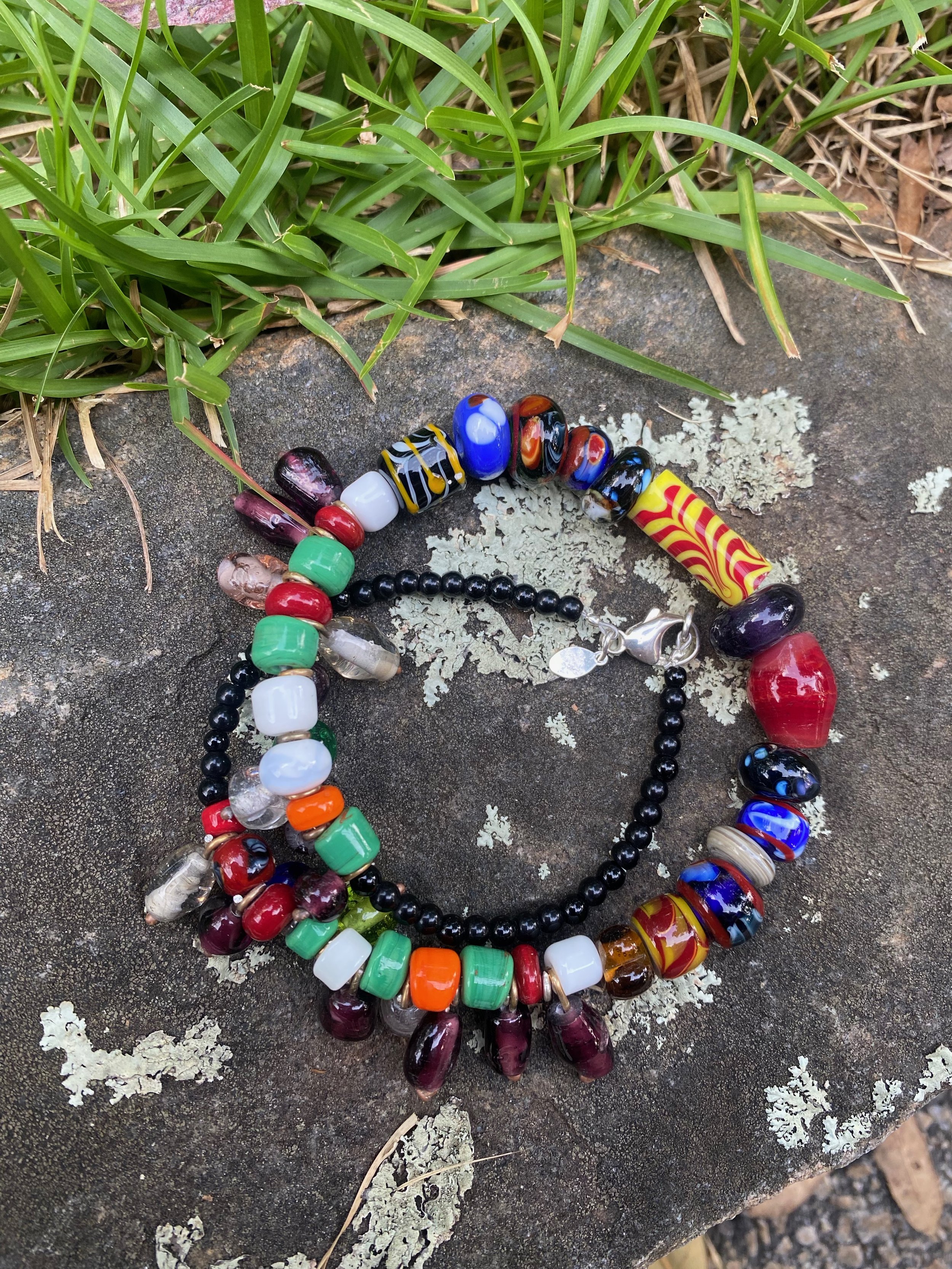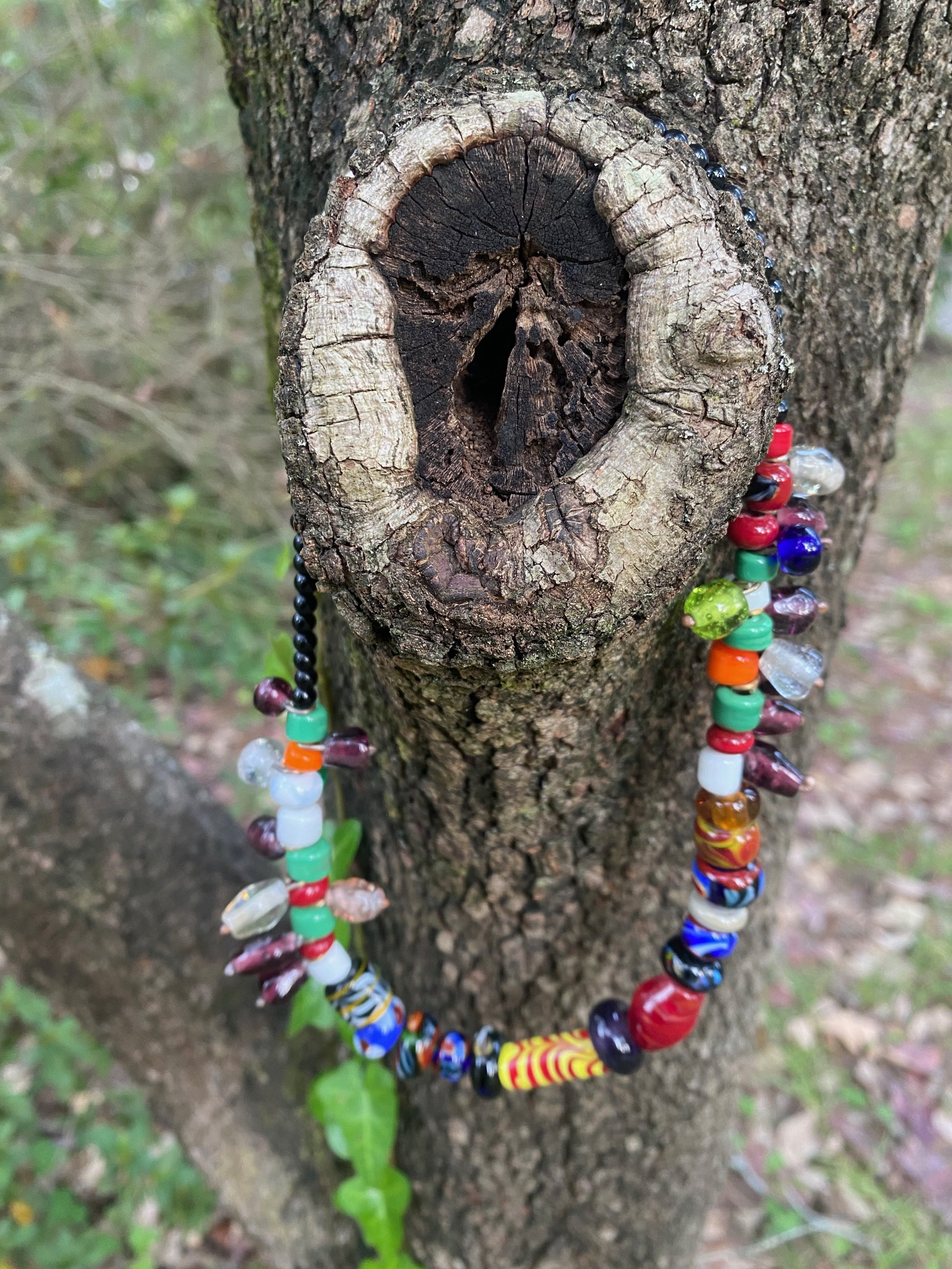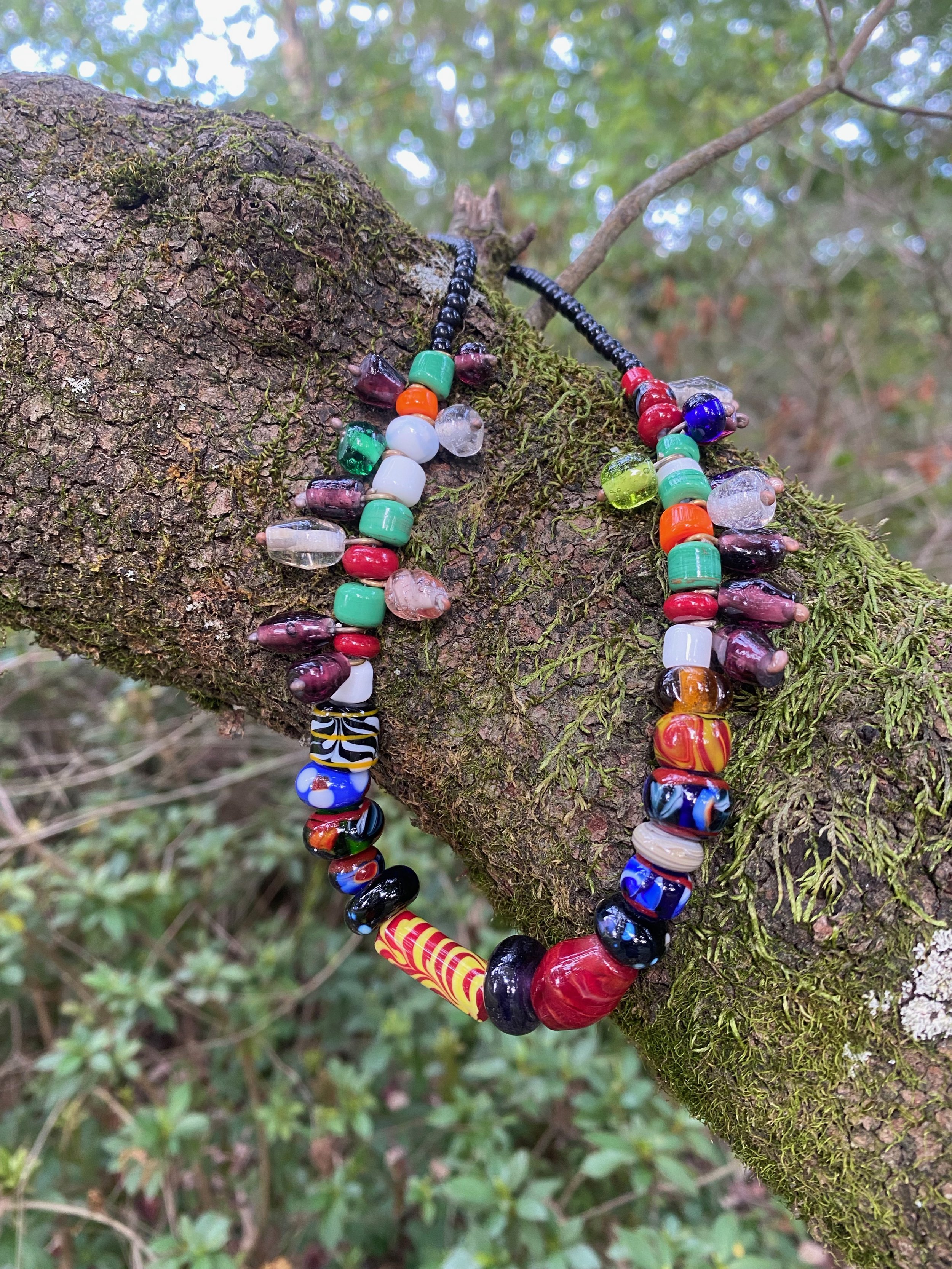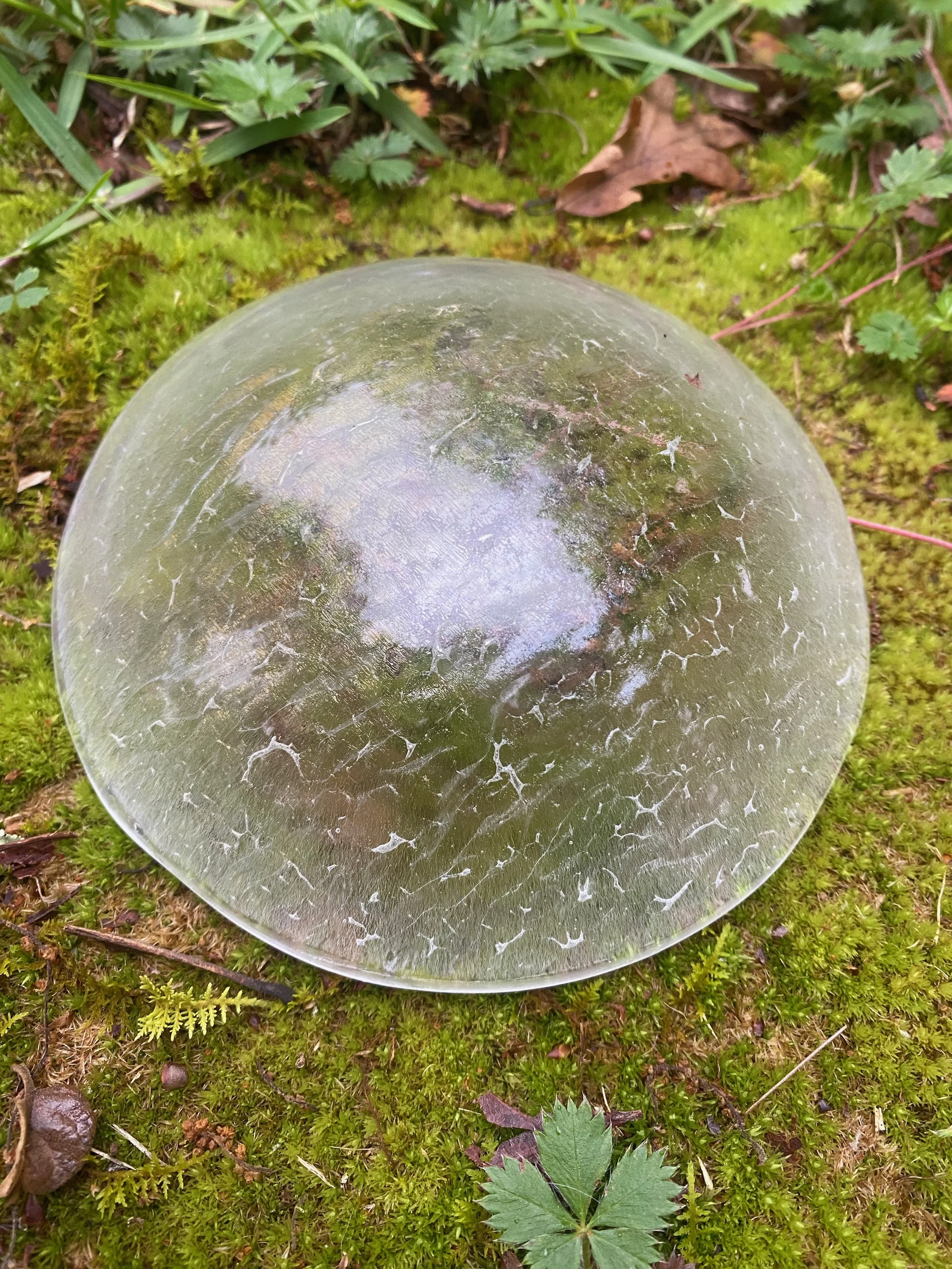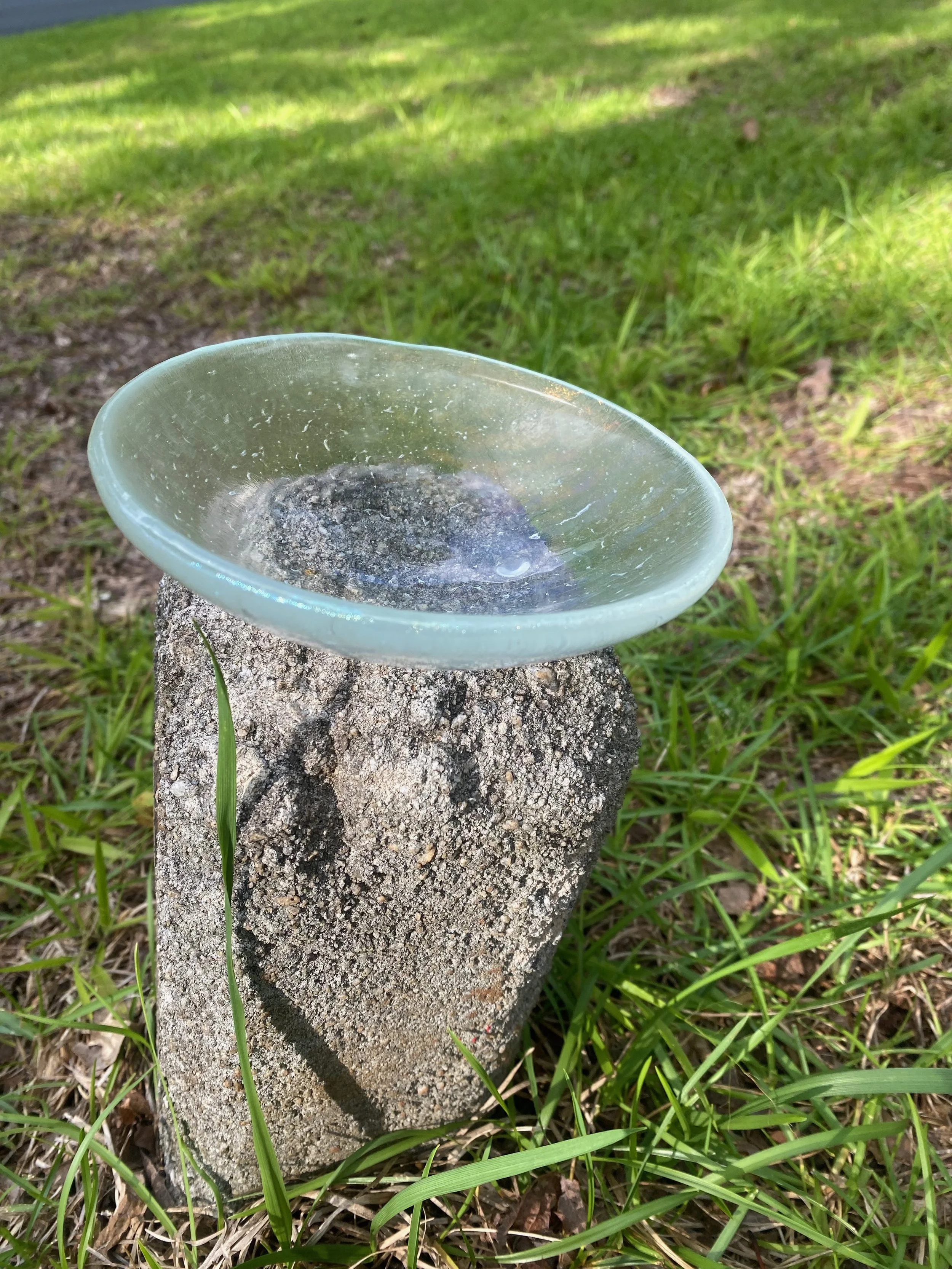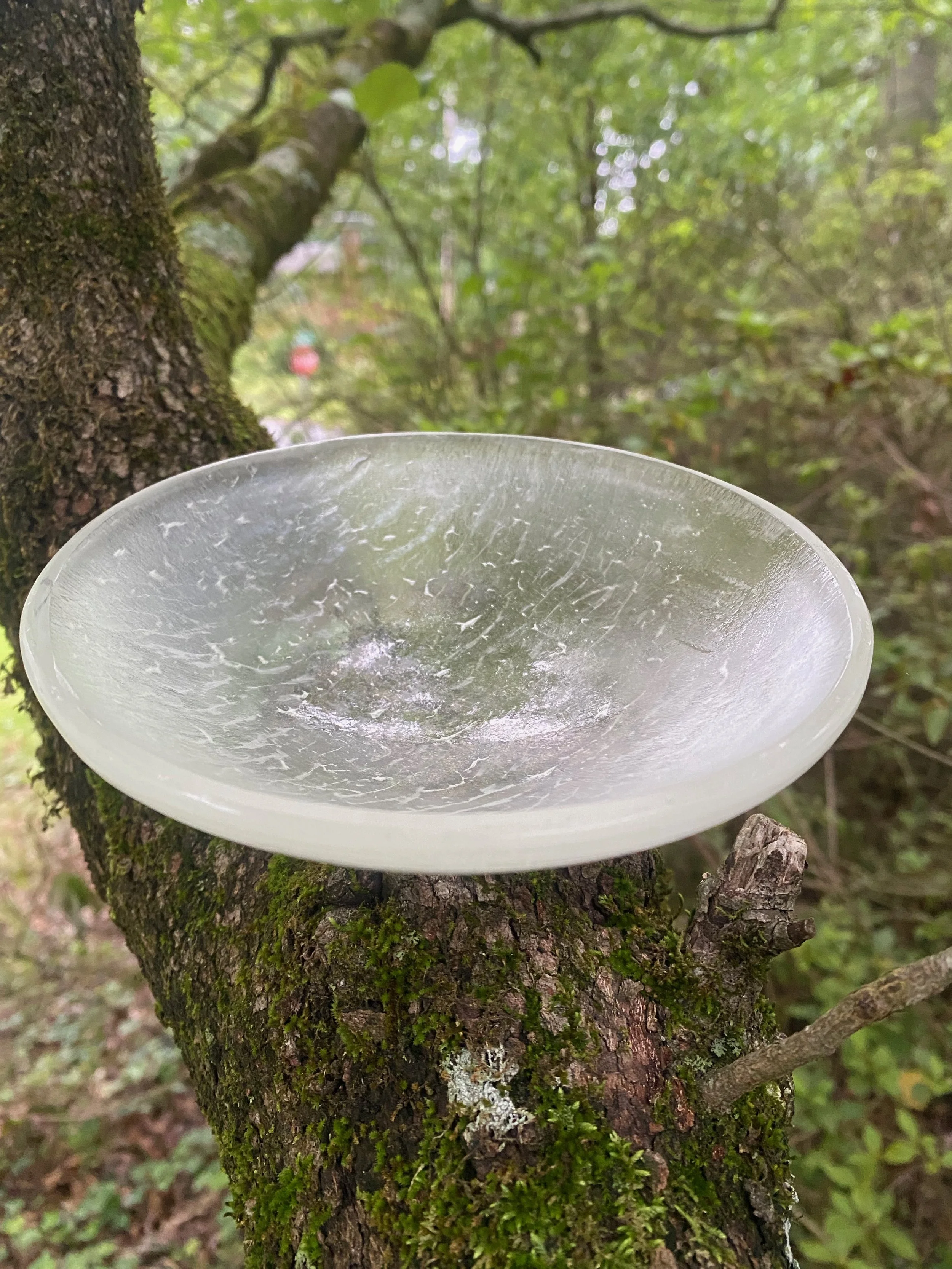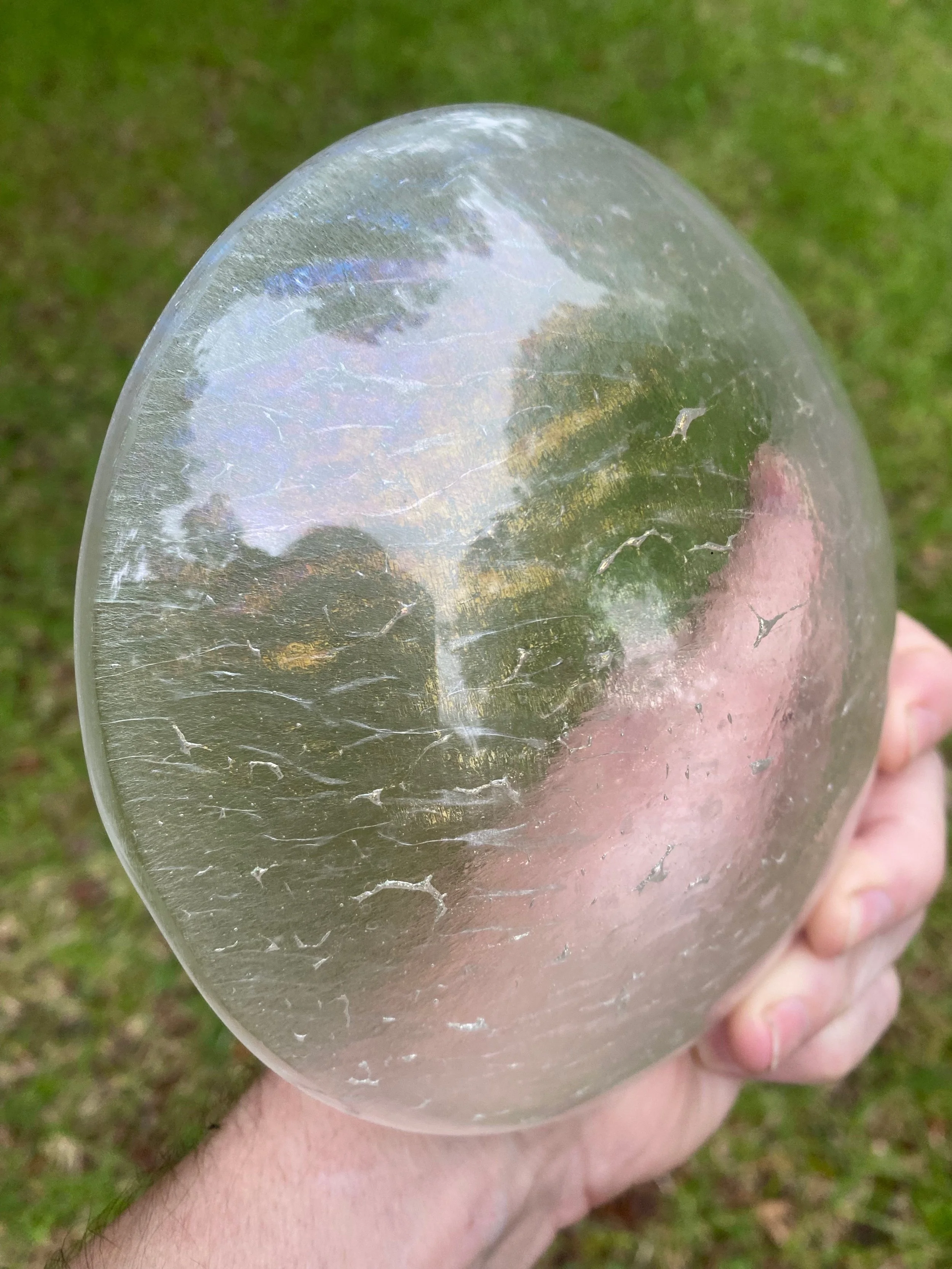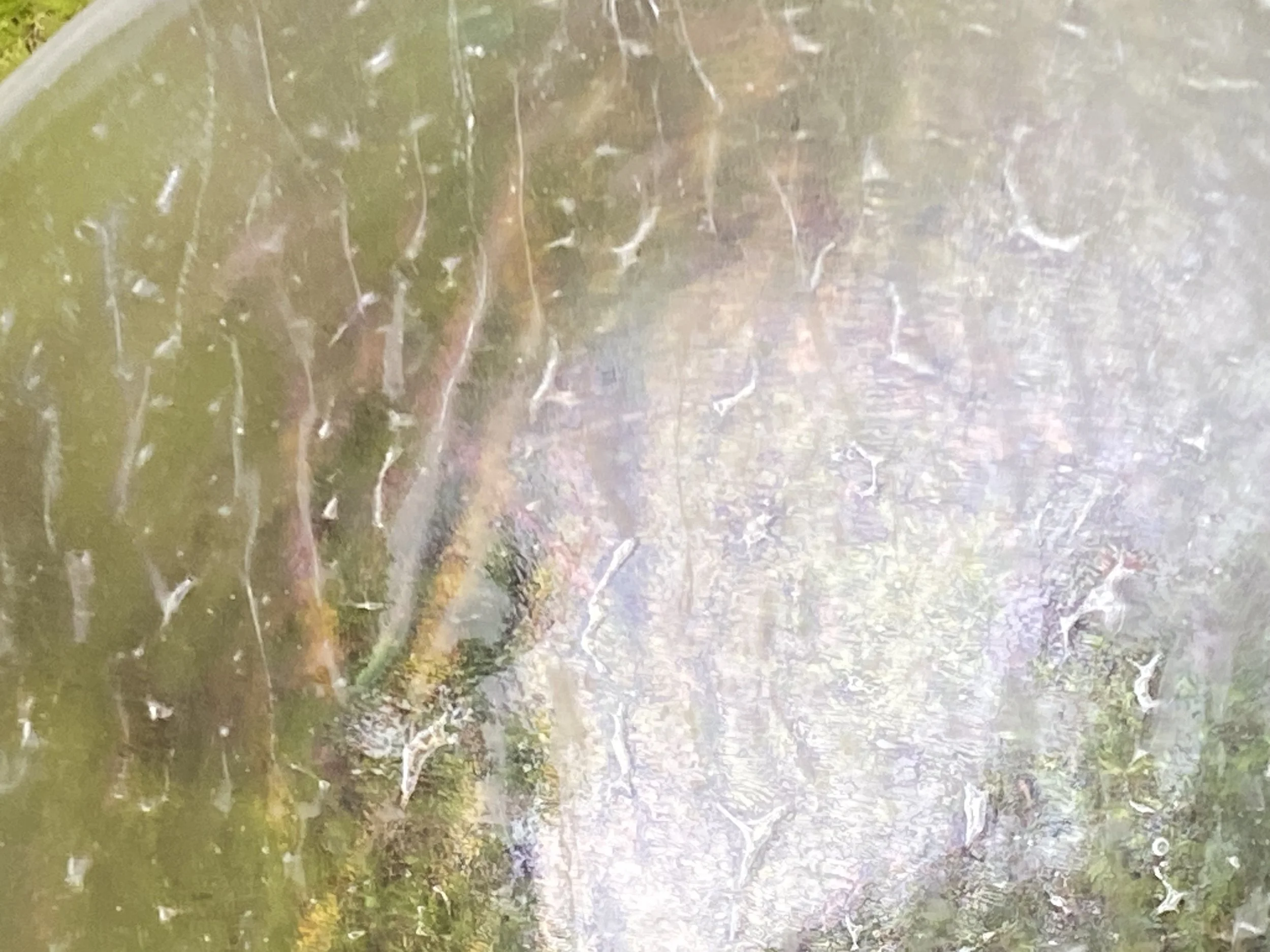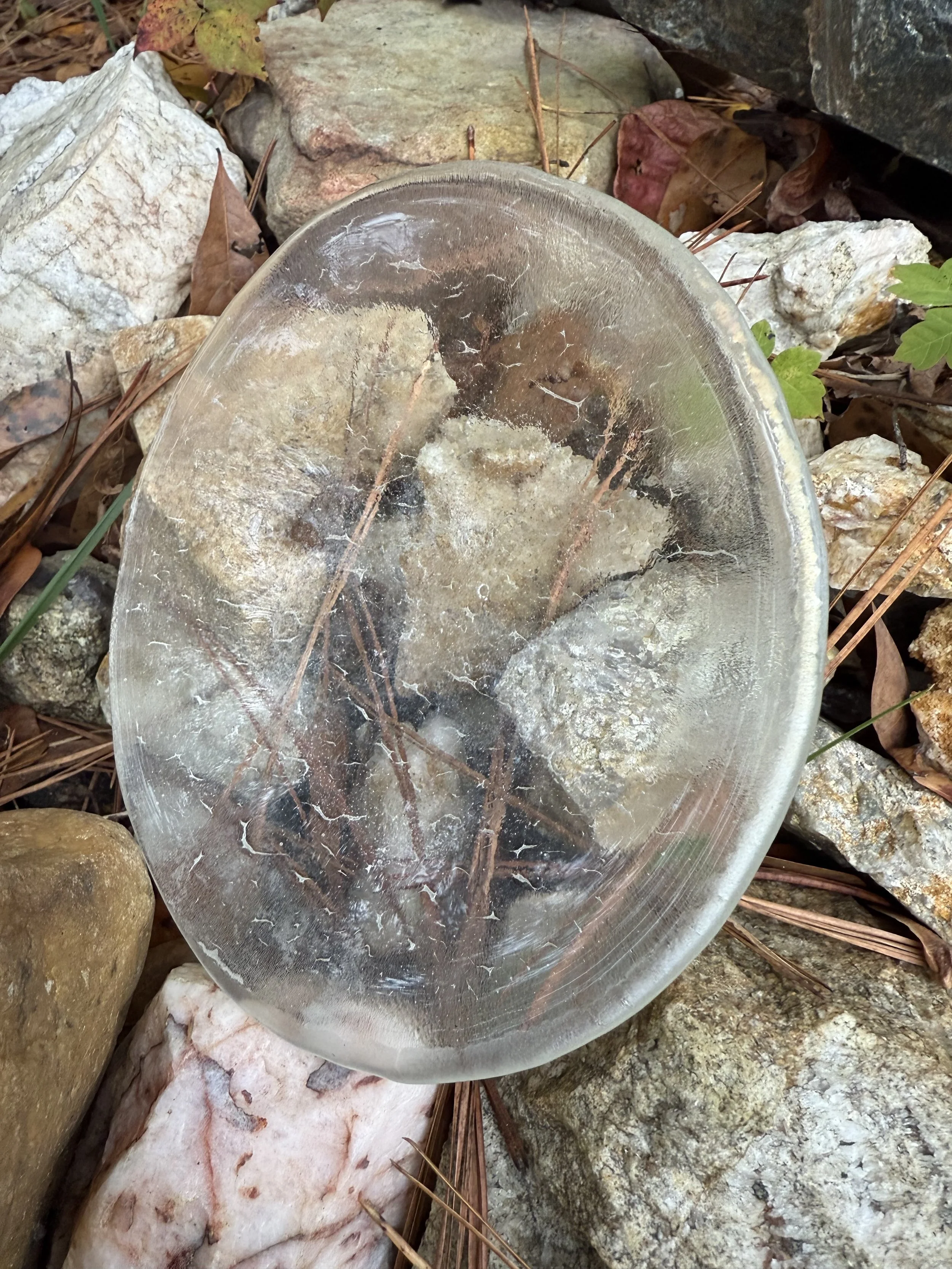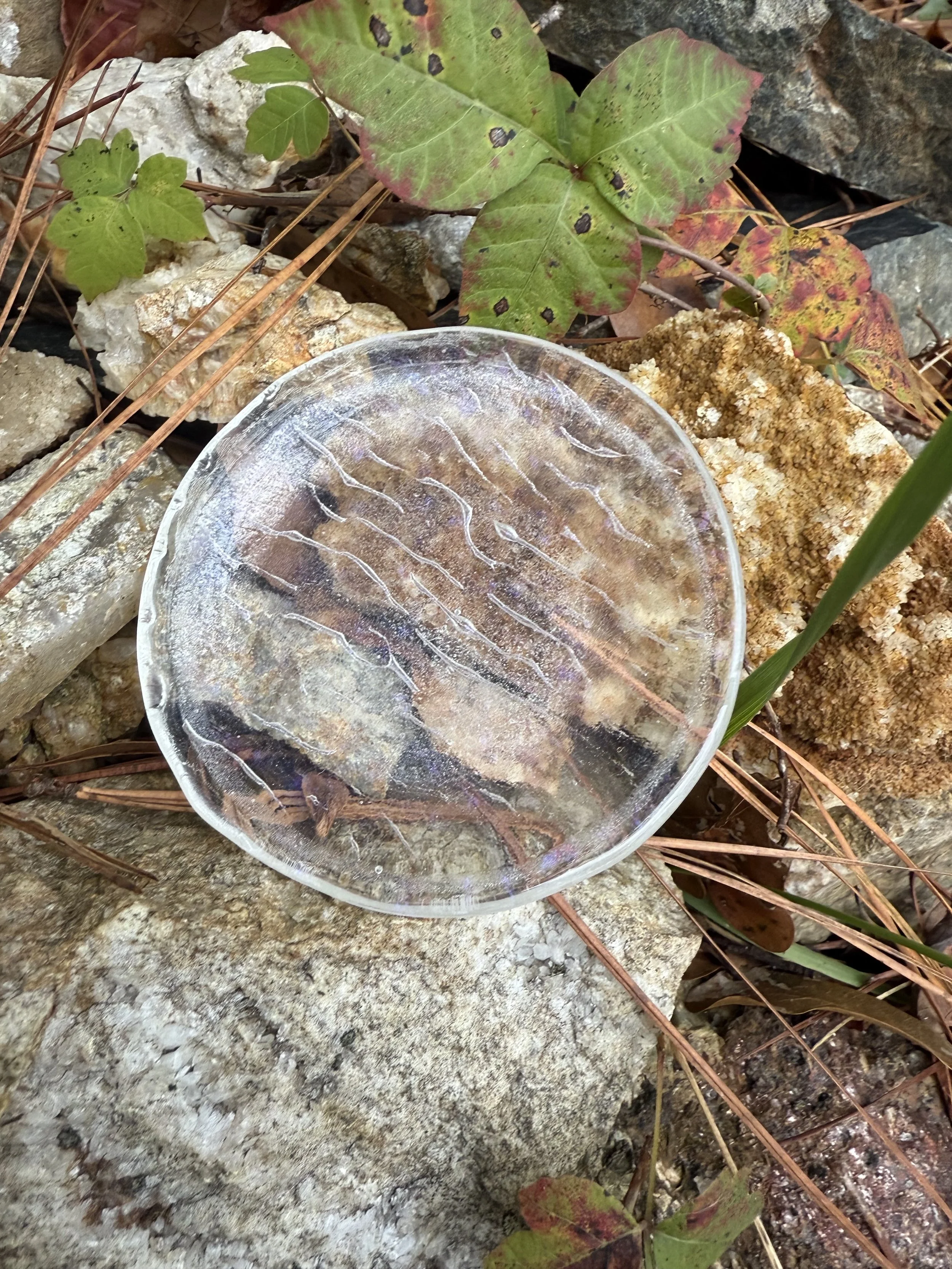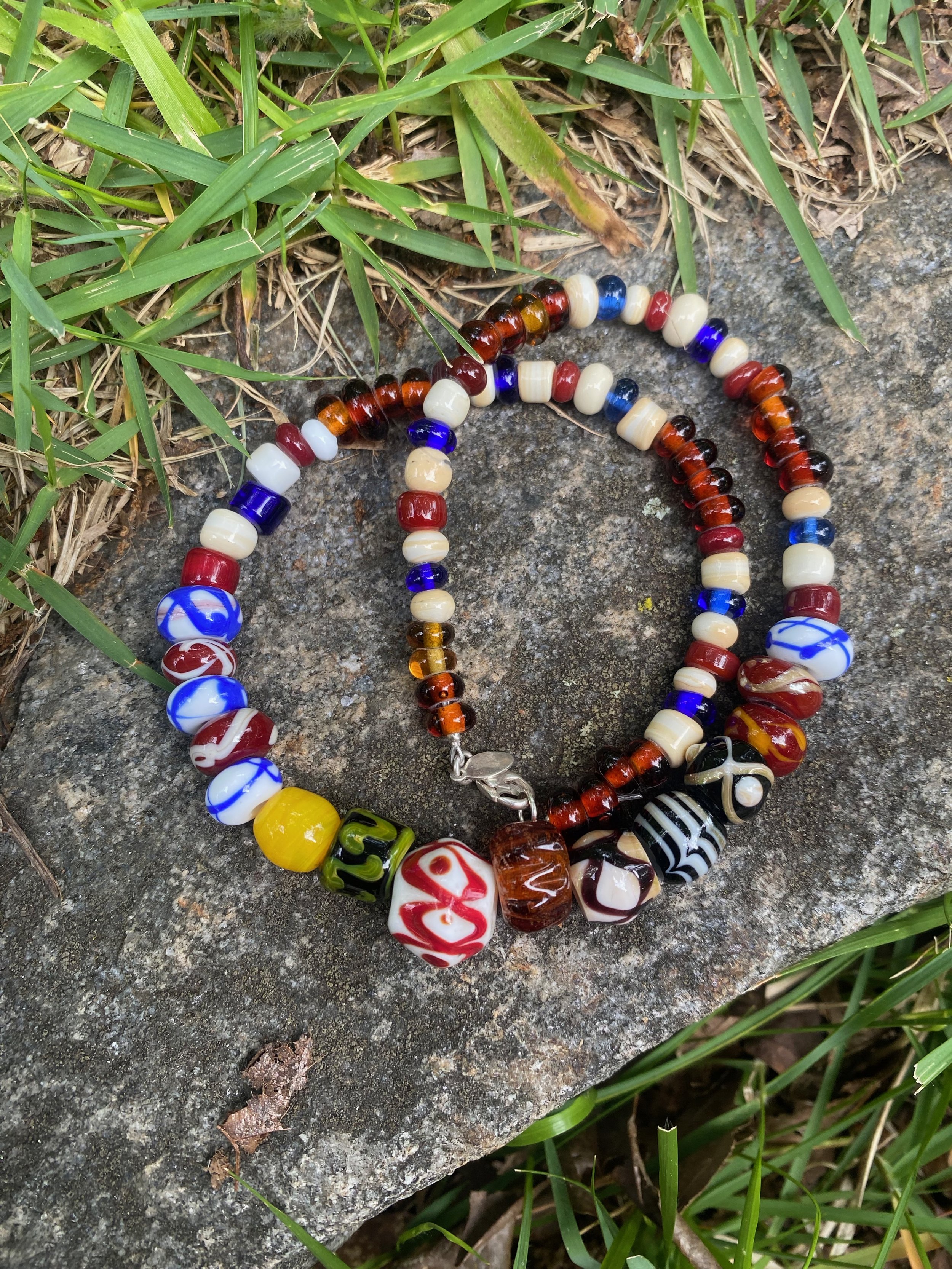 Image 1 of 12
Image 1 of 12

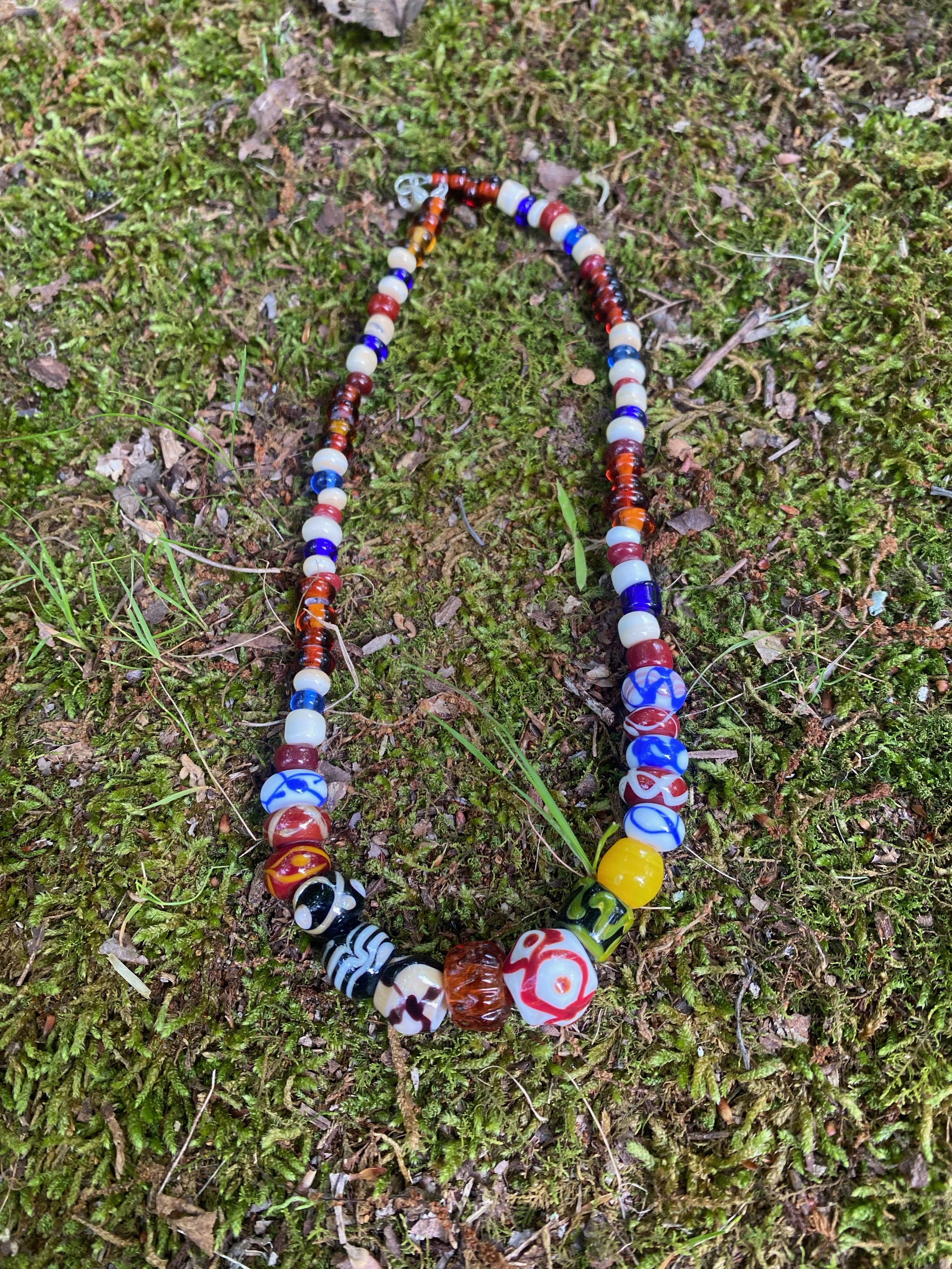 Image 2 of 12
Image 2 of 12

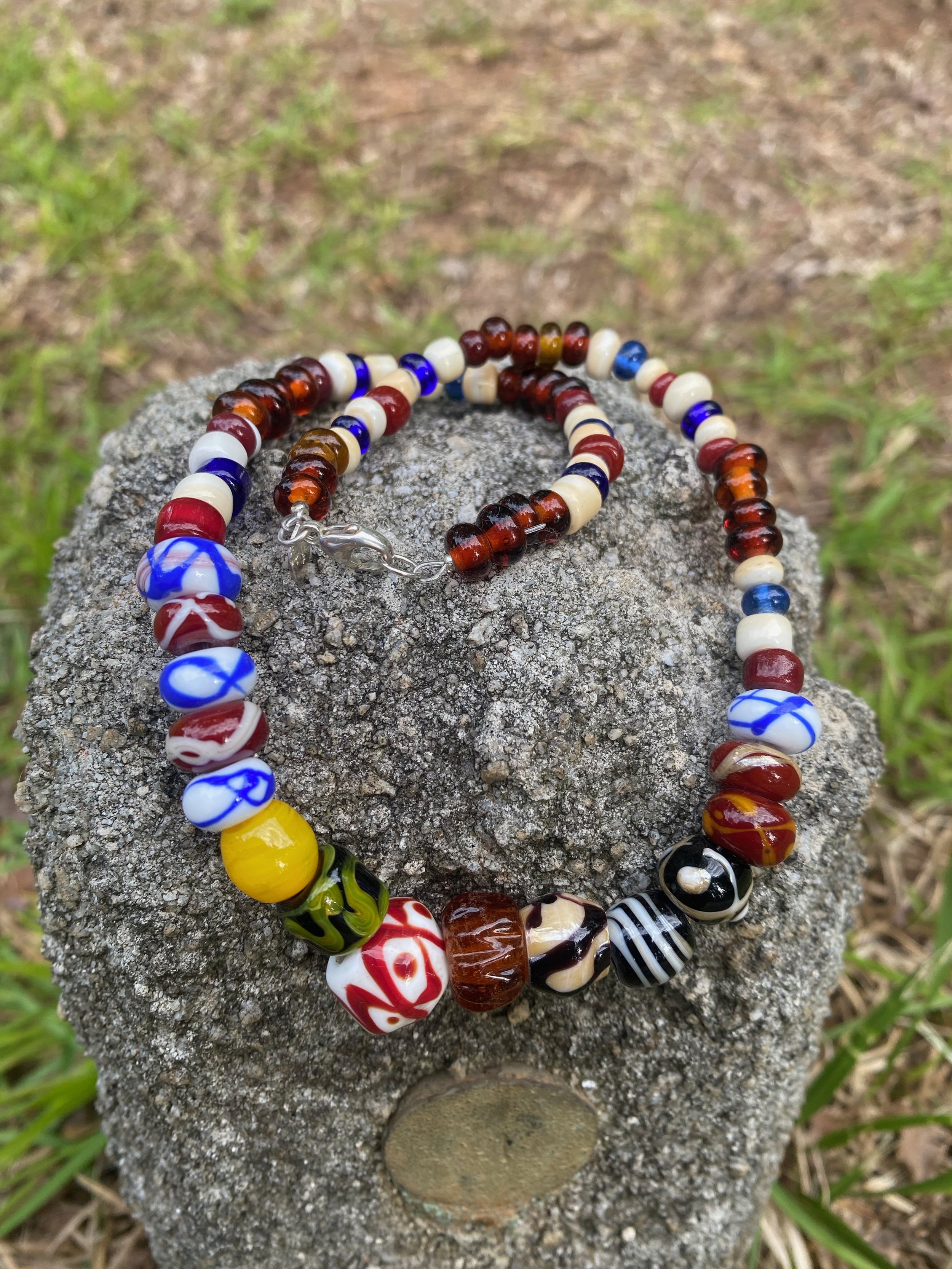 Image 3 of 12
Image 3 of 12

 Image 4 of 12
Image 4 of 12

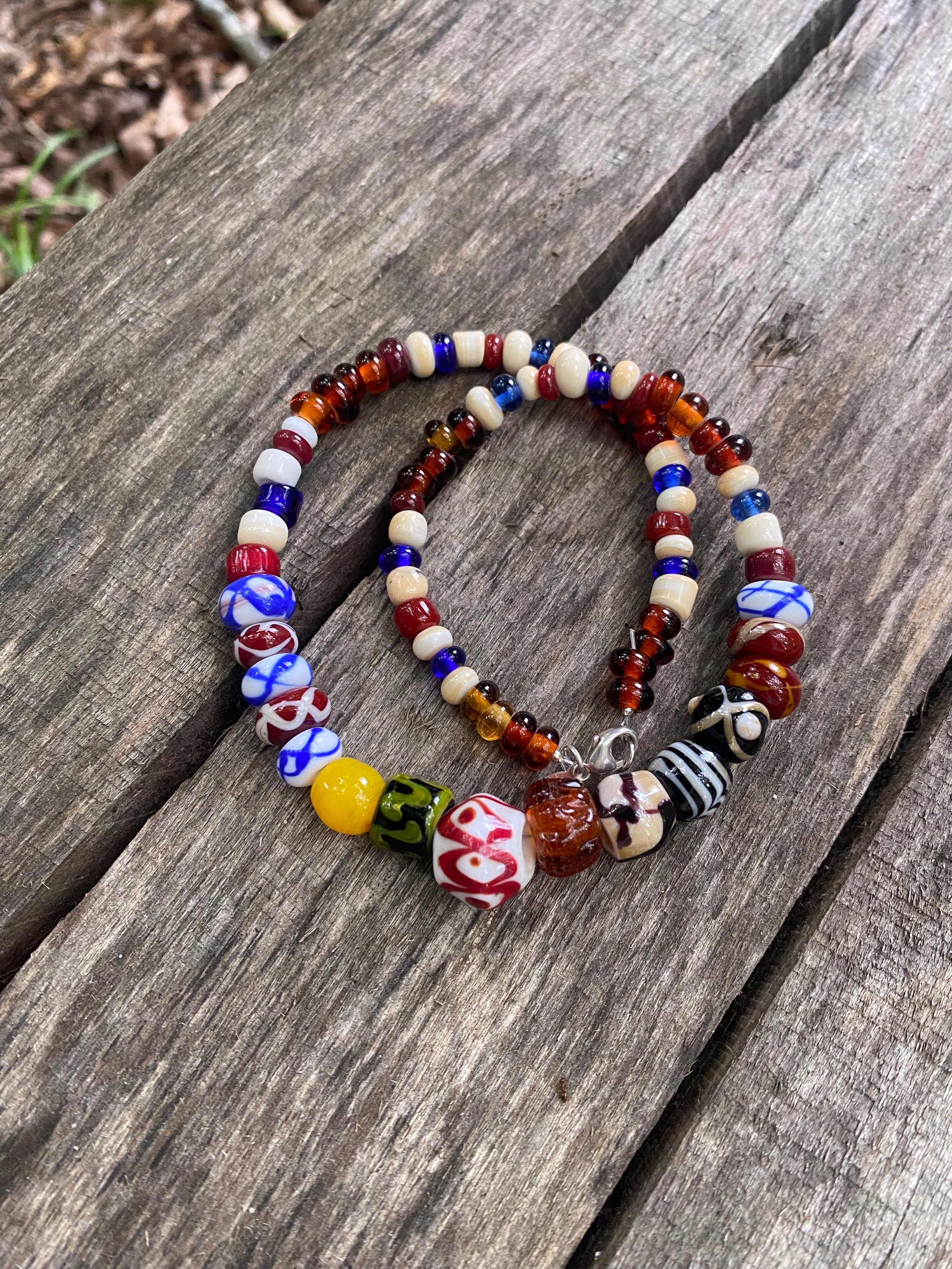 Image 5 of 12
Image 5 of 12

 Image 6 of 12
Image 6 of 12

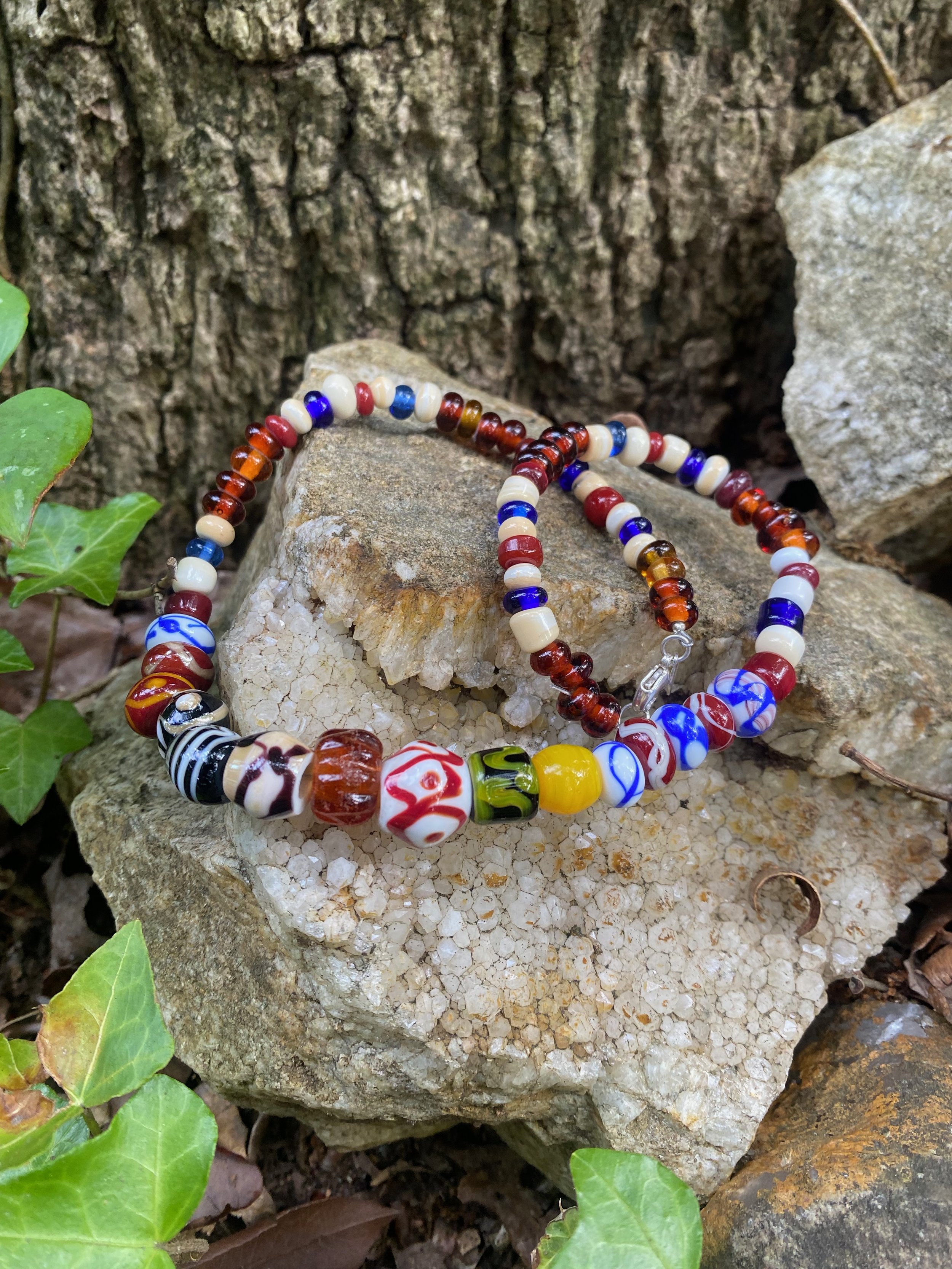 Image 7 of 12
Image 7 of 12

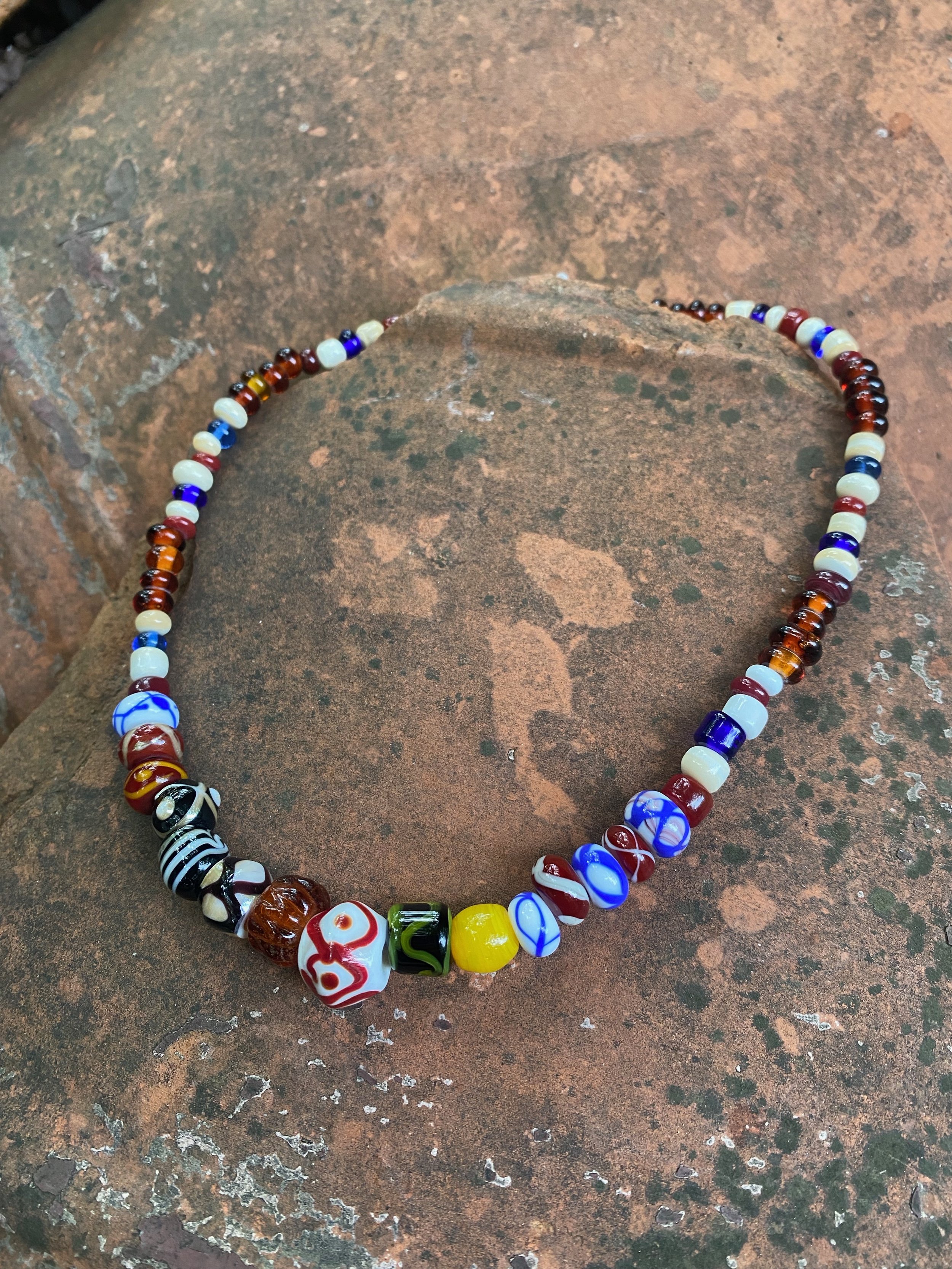 Image 8 of 12
Image 8 of 12

 Image 9 of 12
Image 9 of 12

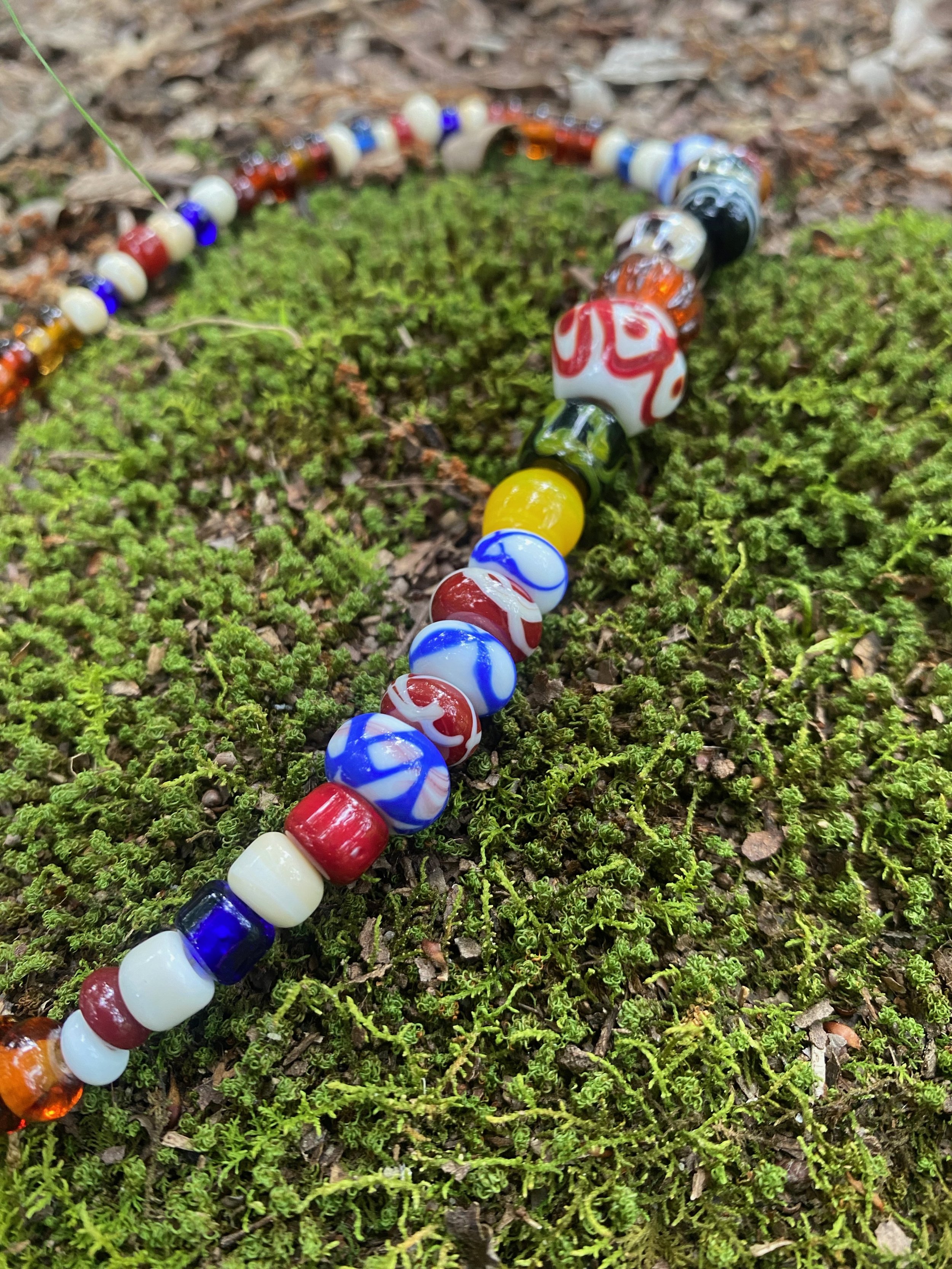 Image 10 of 12
Image 10 of 12

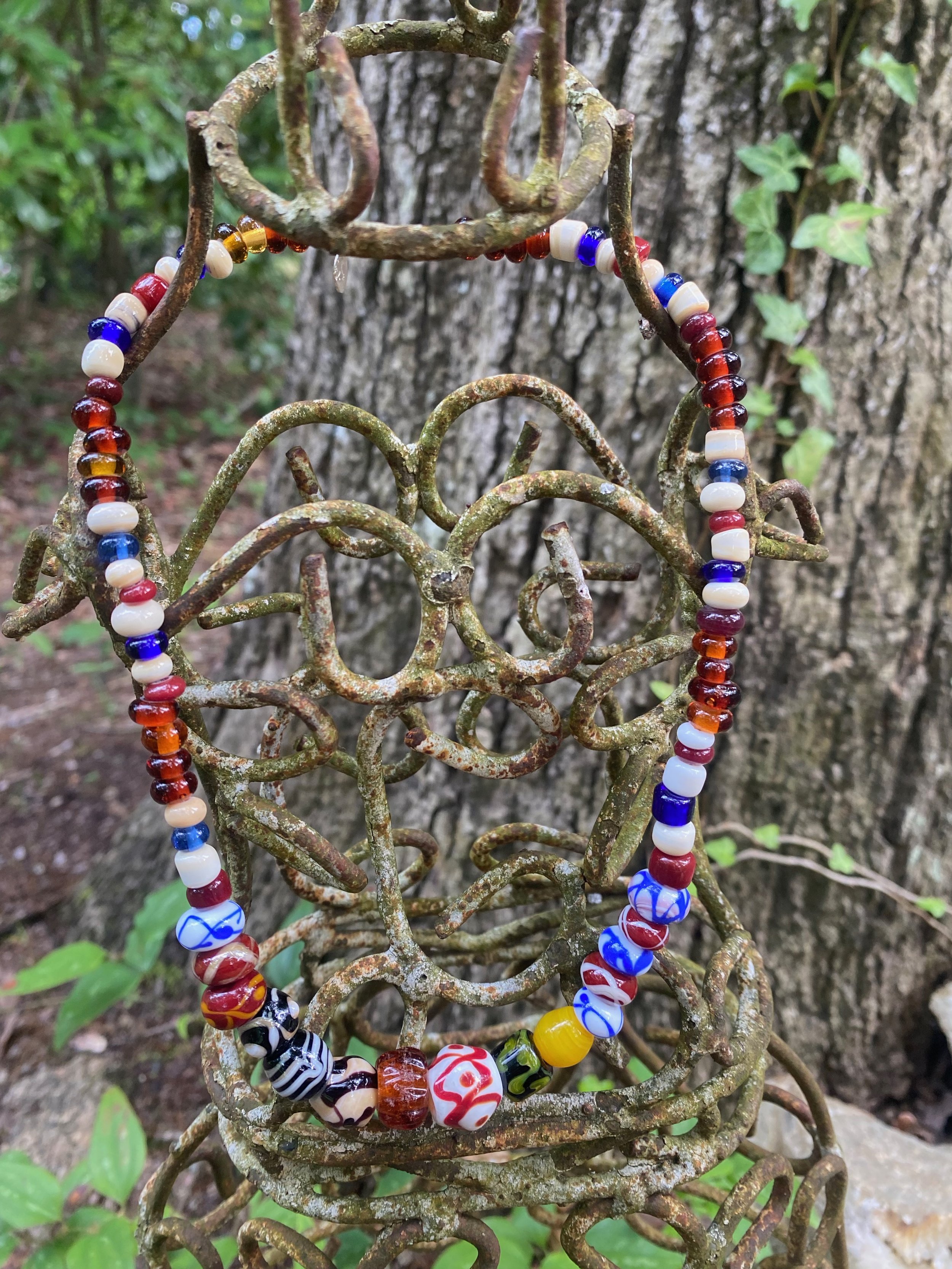 Image 11 of 12
Image 11 of 12

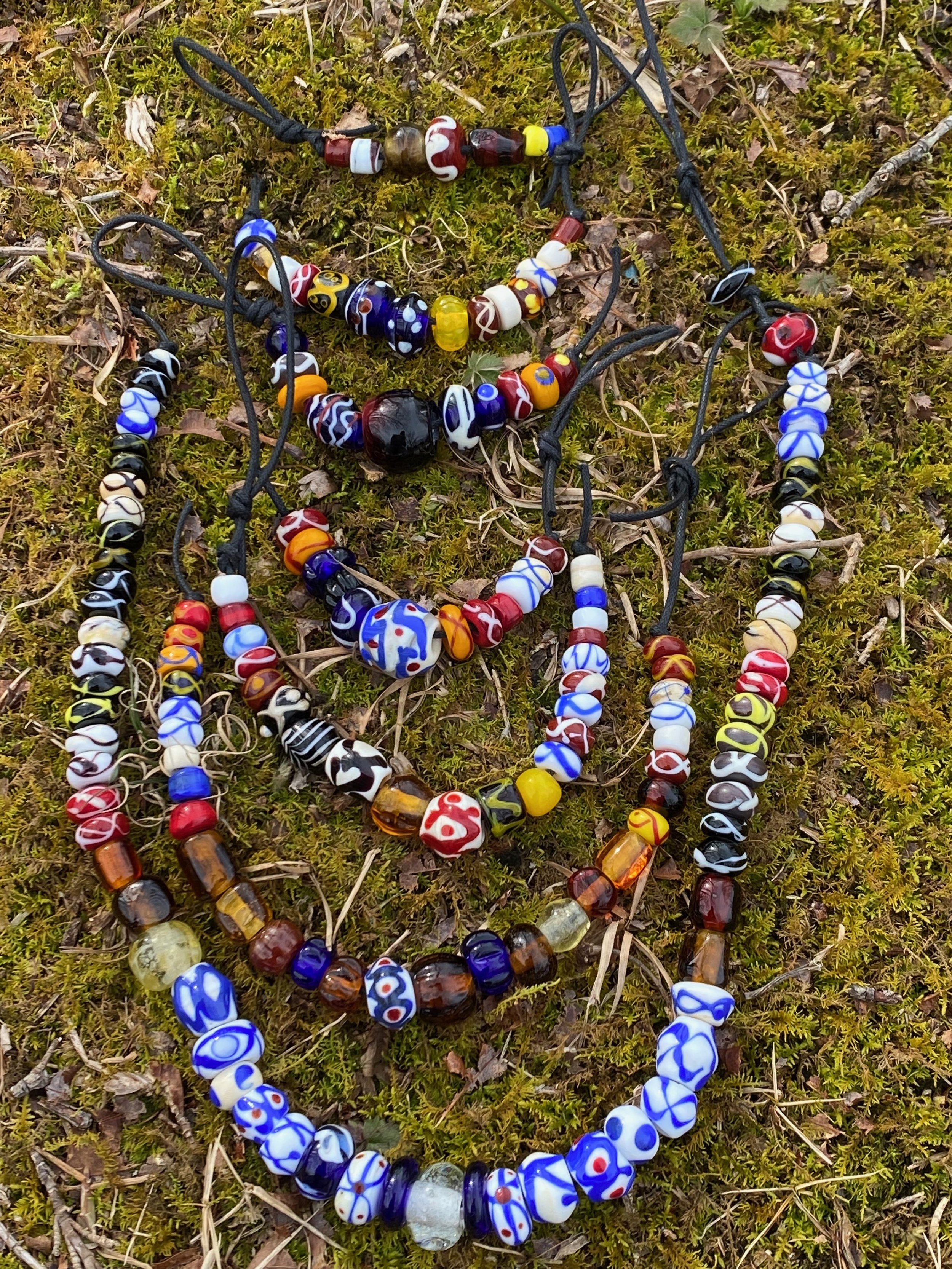 Image 12 of 12
Image 12 of 12













Anglo Saxon Hadleigh Road Cemetery Necklace With Amber Glass
This 17 inch necklace is inspired by a set of beads from an Anglo Saxon find at Hadleigh Road Cemetery, Ipswich, UK. The focal segment of the strand are reproductions of the beads in the find. The alternating amber and blue pattern was added to make the strand necklace length. The strand is strung on stainless steel wire and finished with sterling silver findings marked .925. The glass used is a combination of COE 104 and recycled glass. The extent example dates between the 5th and 7thcenturies. The reproduction work was done using 20th century artistic representation and photographs of other modern reproductions. The beads are assembled as they were by the 20th century interpreters.
This 17 inch necklace is inspired by a set of beads from an Anglo Saxon find at Hadleigh Road Cemetery, Ipswich, UK. The focal segment of the strand are reproductions of the beads in the find. The alternating amber and blue pattern was added to make the strand necklace length. The strand is strung on stainless steel wire and finished with sterling silver findings marked .925. The glass used is a combination of COE 104 and recycled glass. The extent example dates between the 5th and 7thcenturies. The reproduction work was done using 20th century artistic representation and photographs of other modern reproductions. The beads are assembled as they were by the 20th century interpreters.
